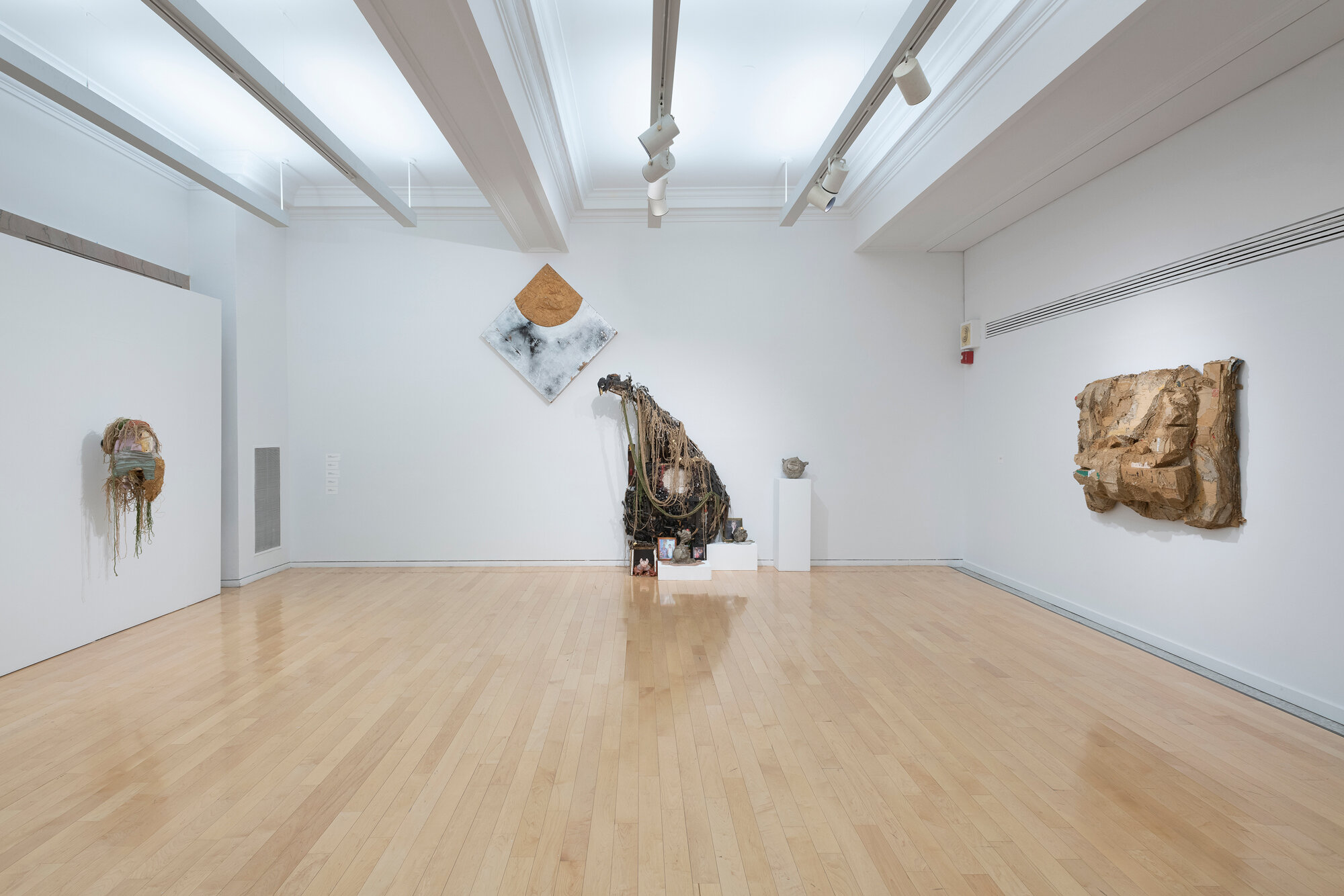
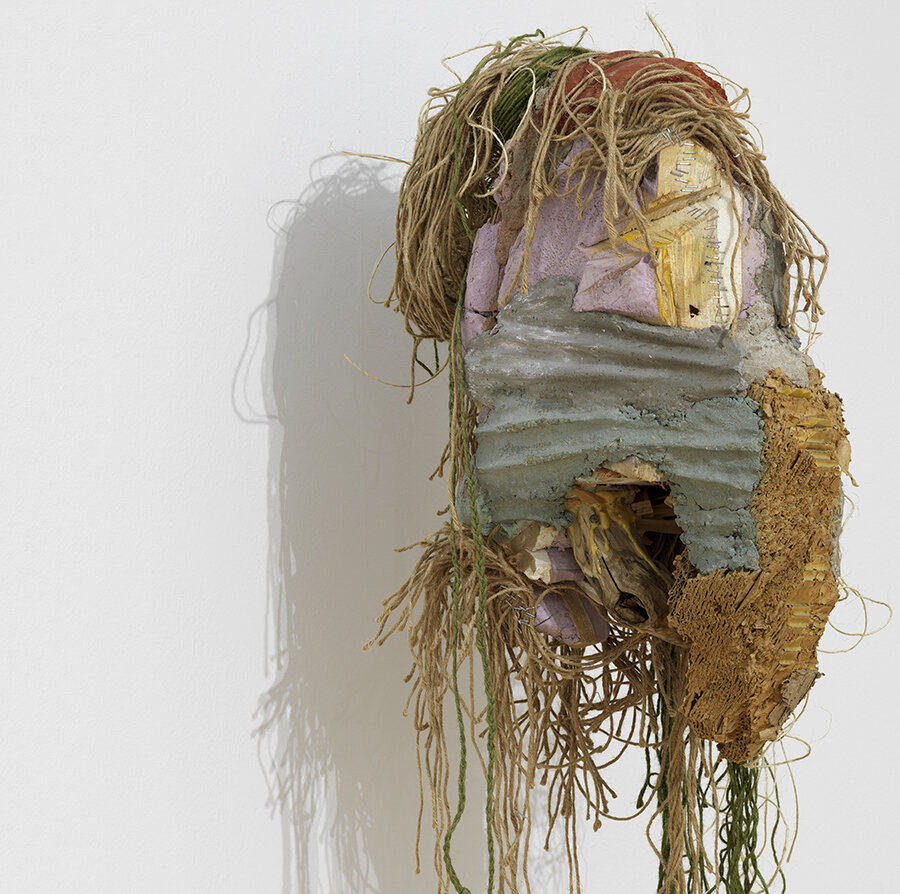
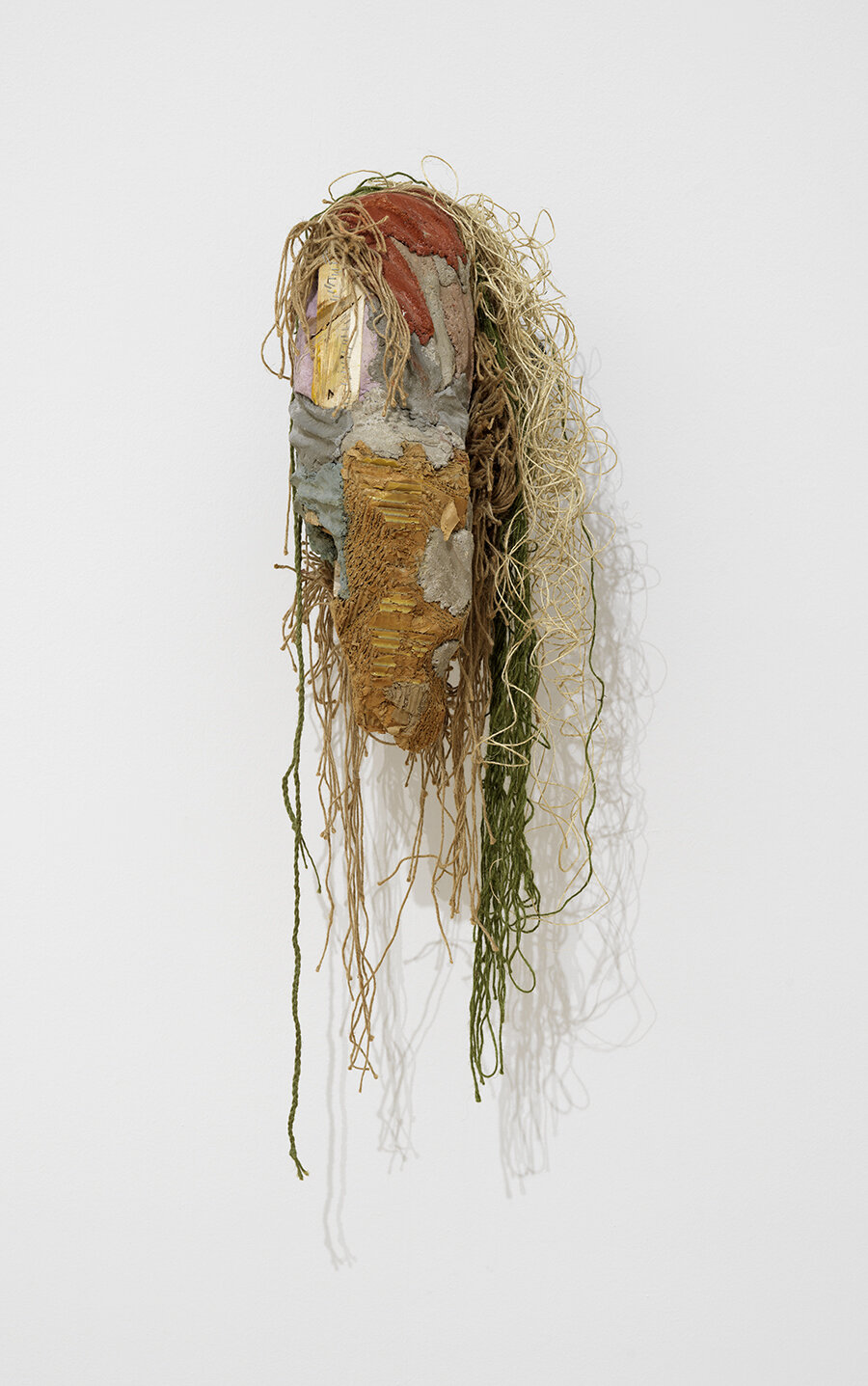
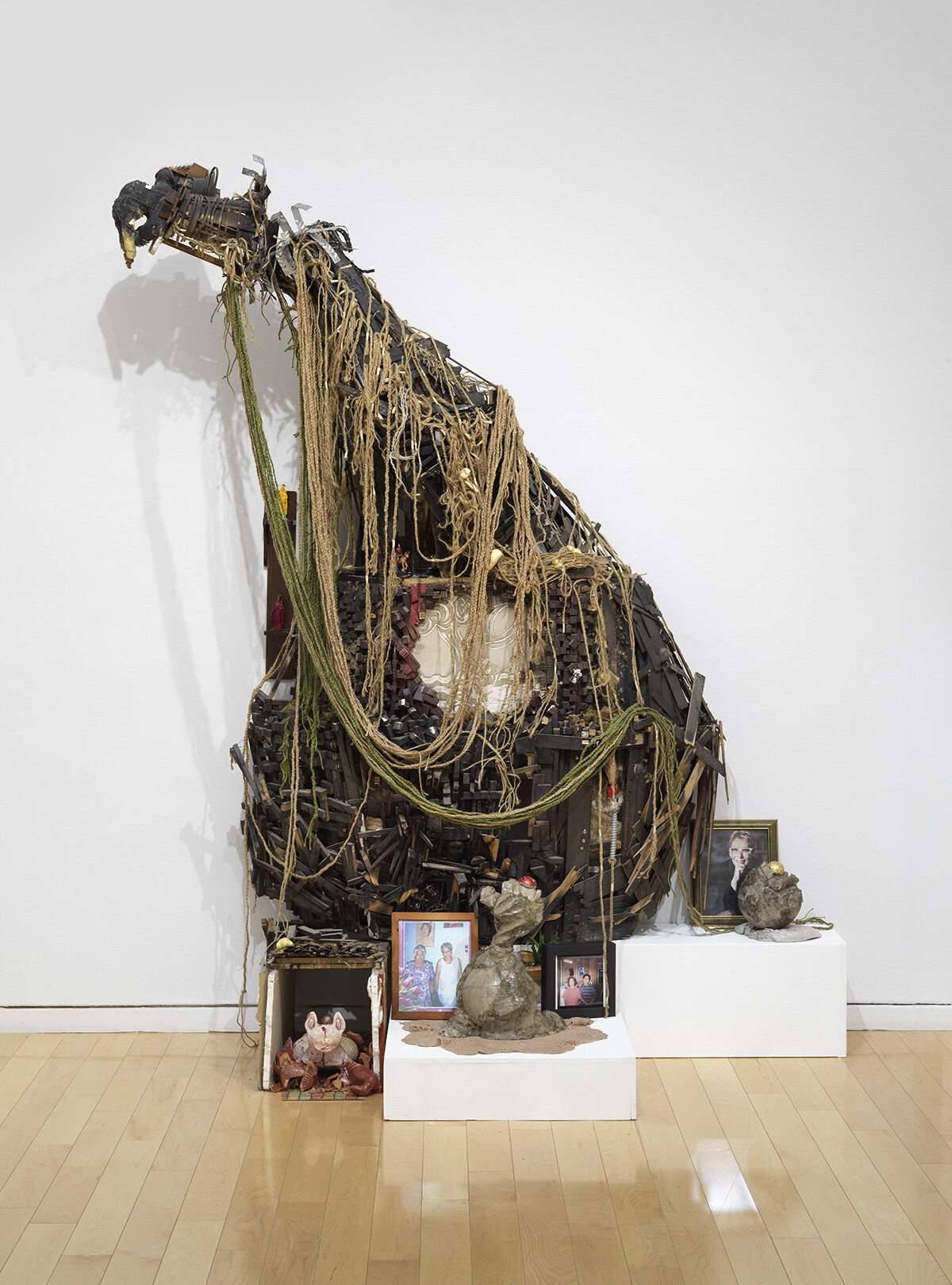
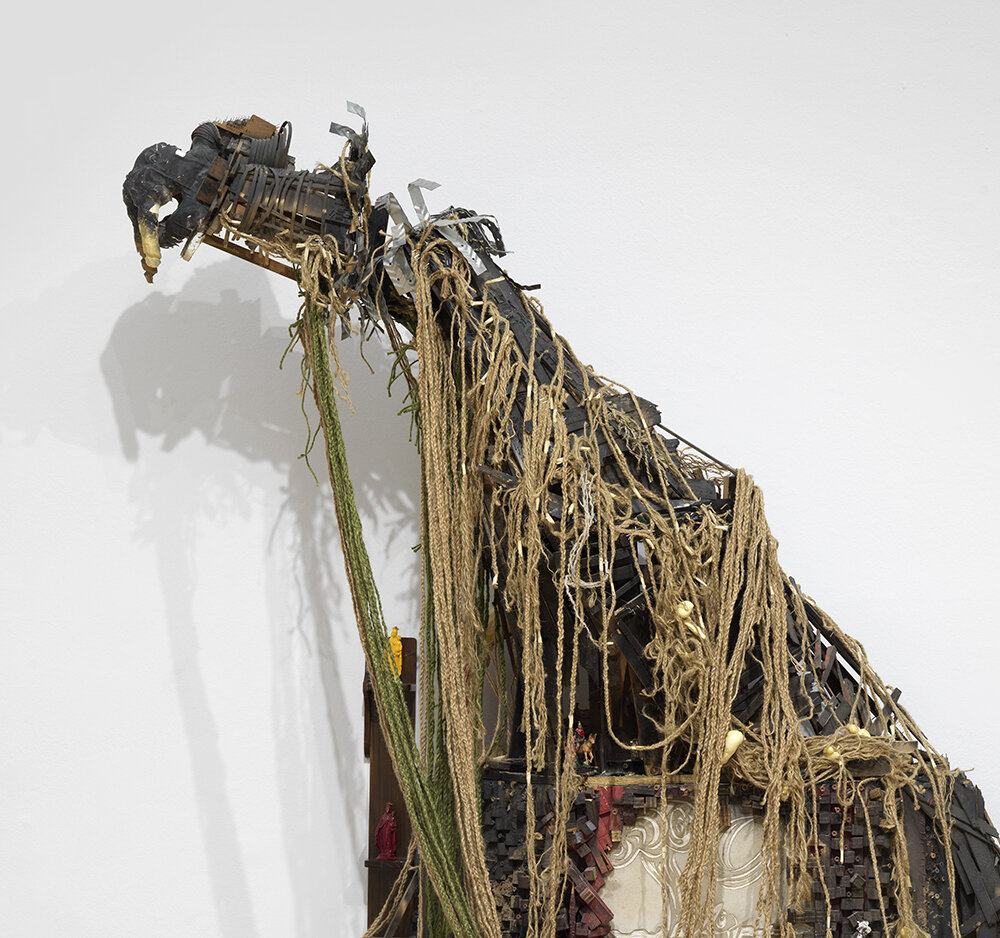
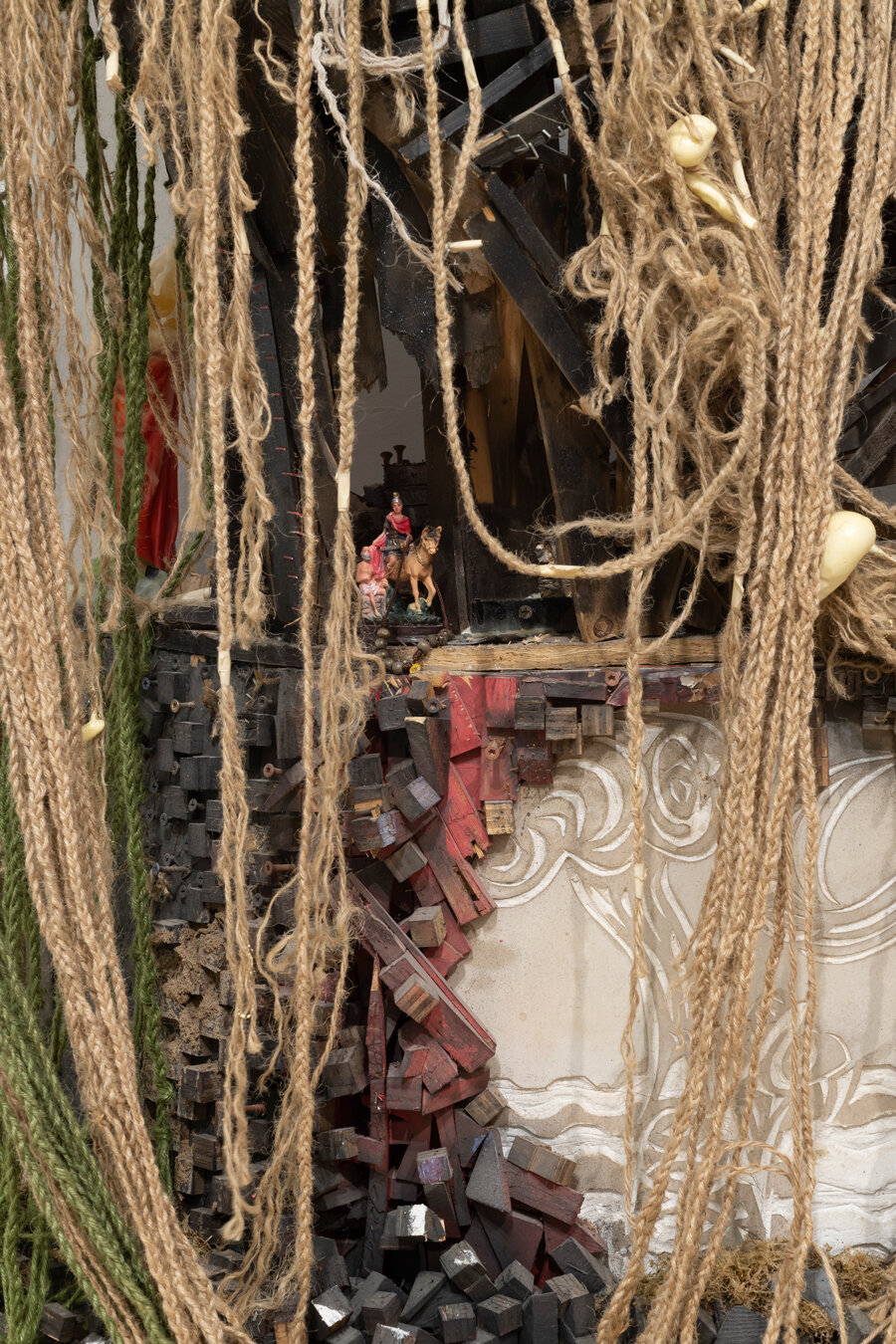
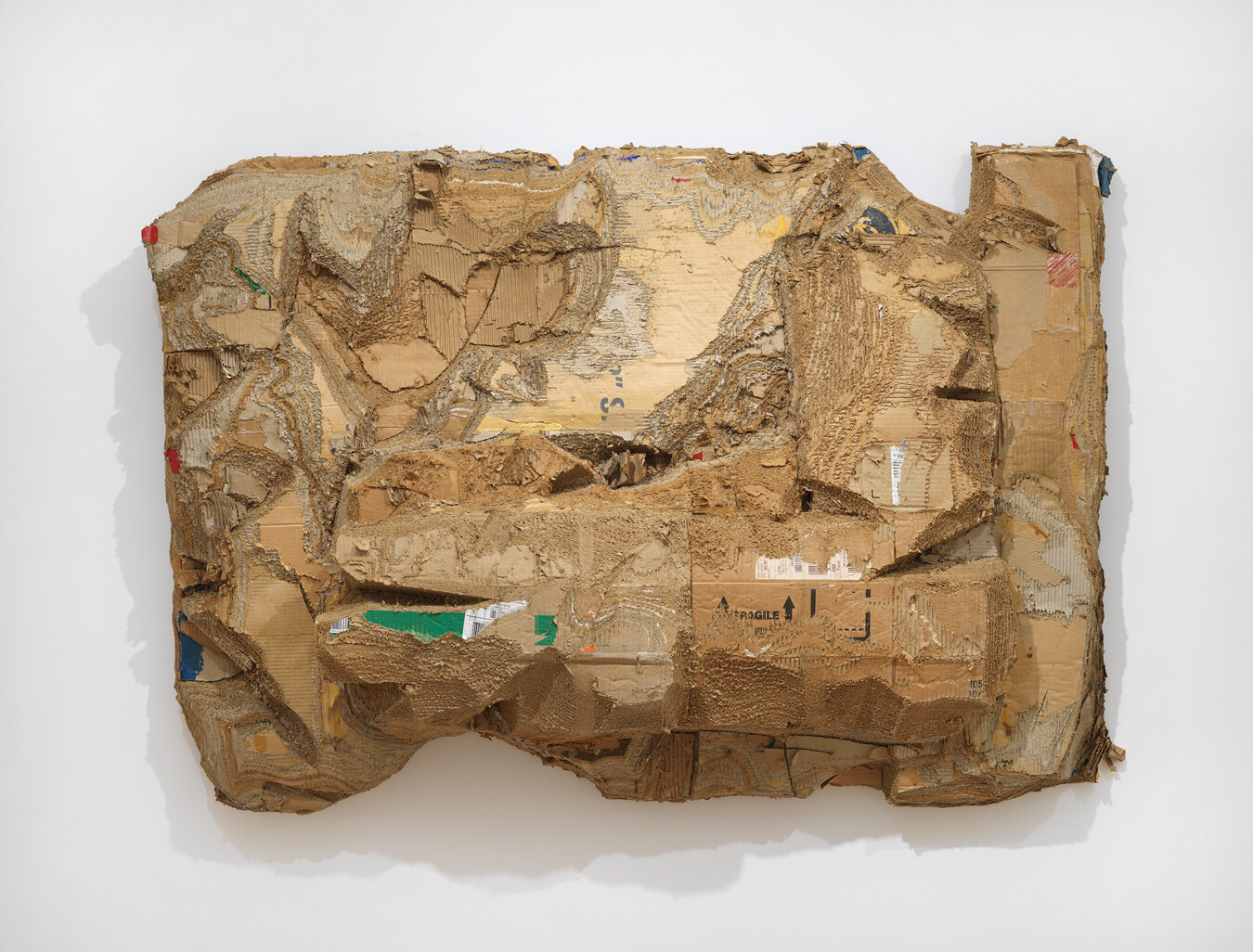
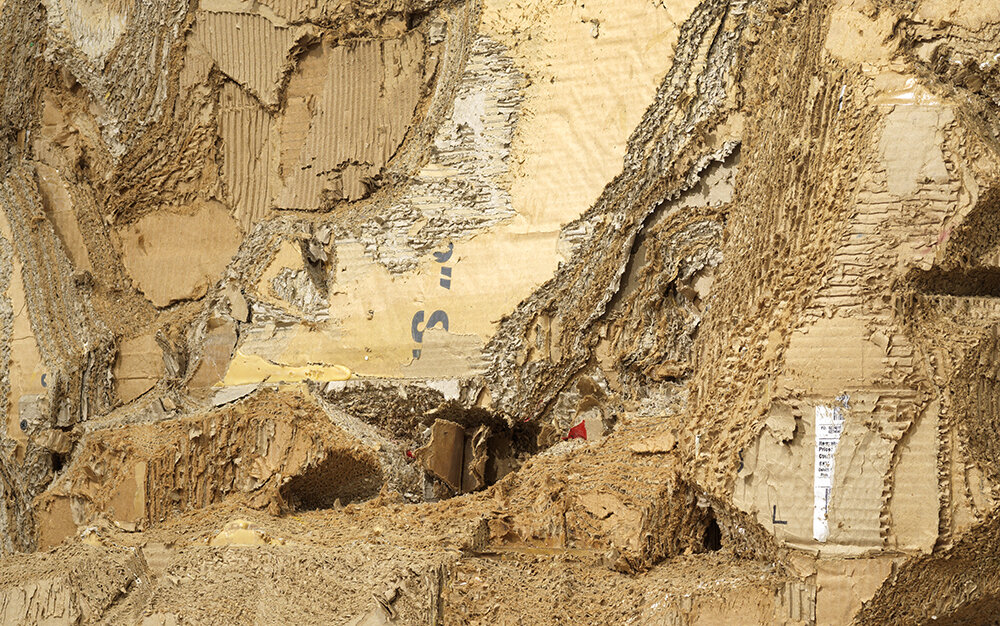
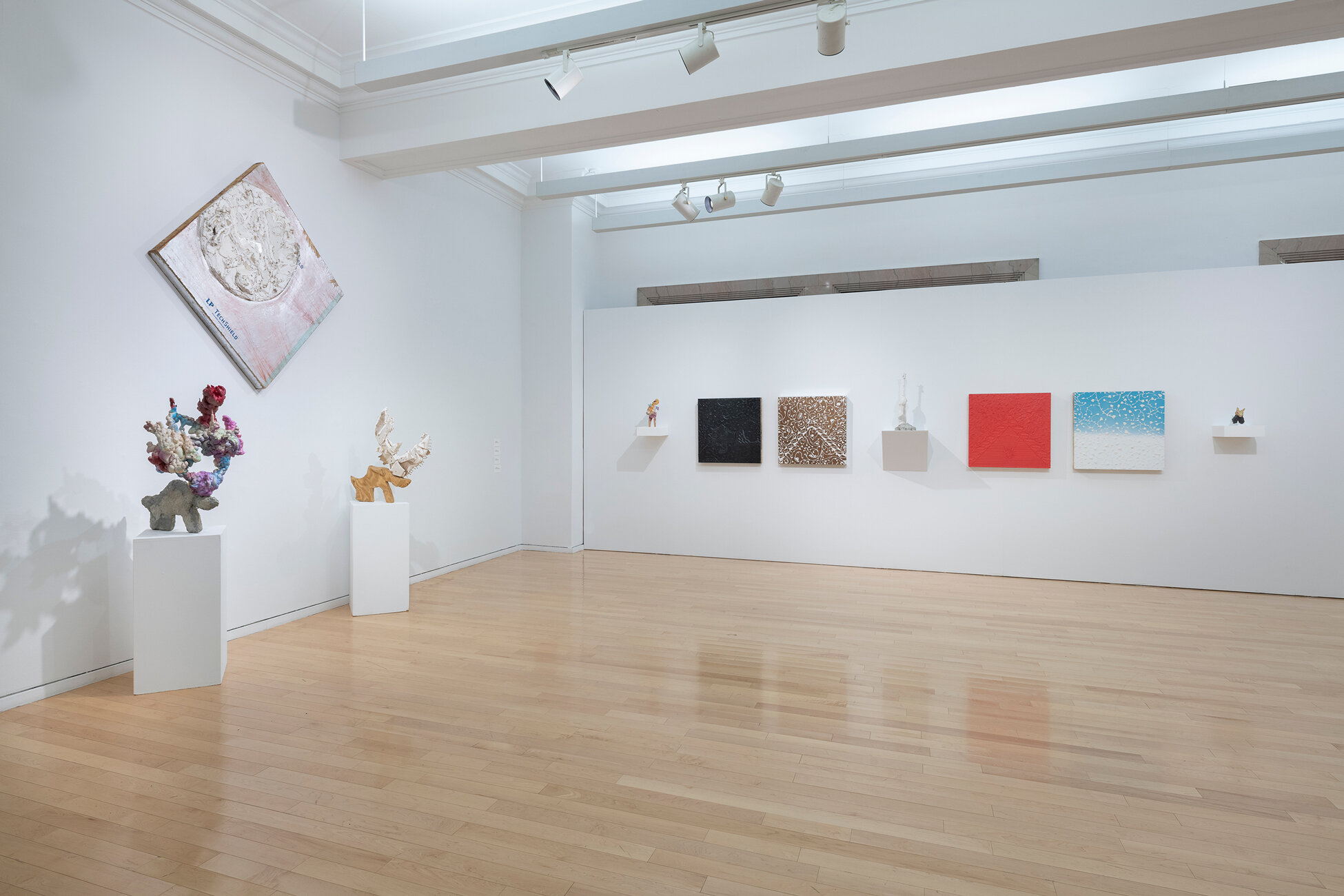
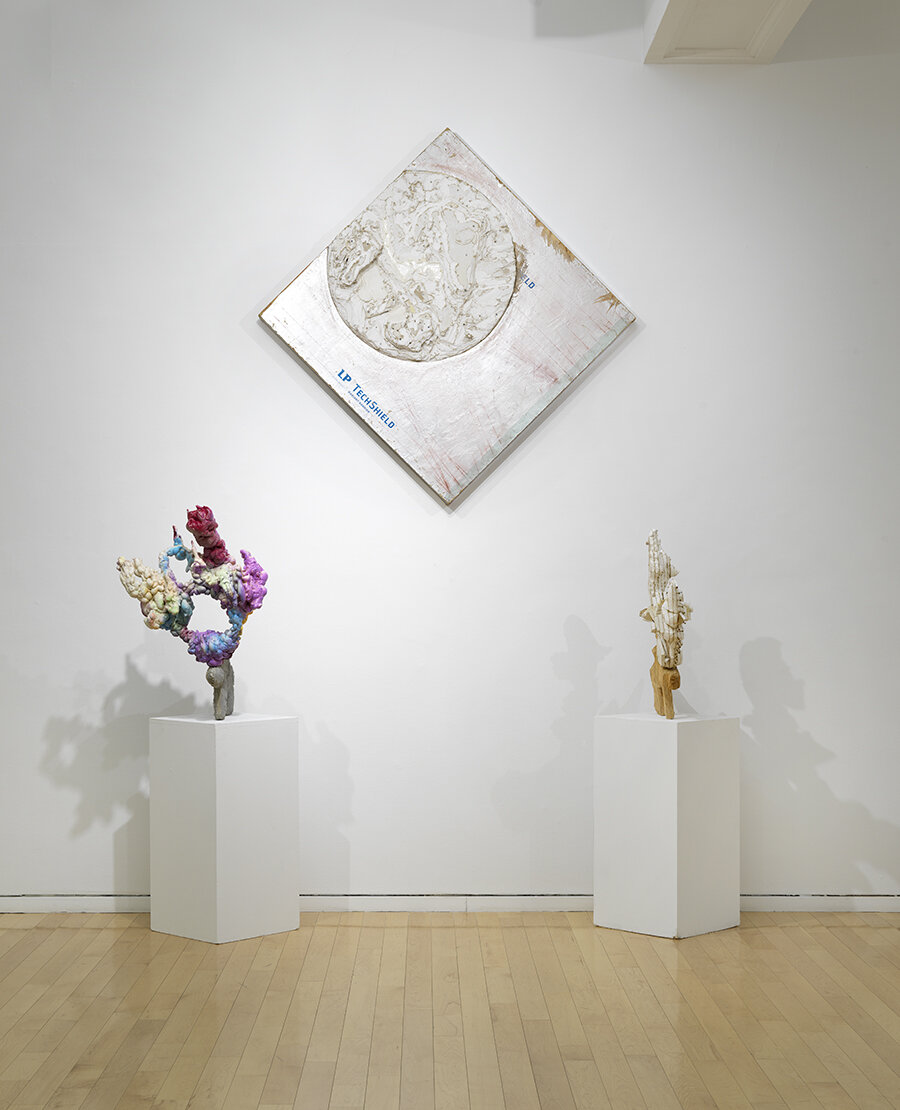
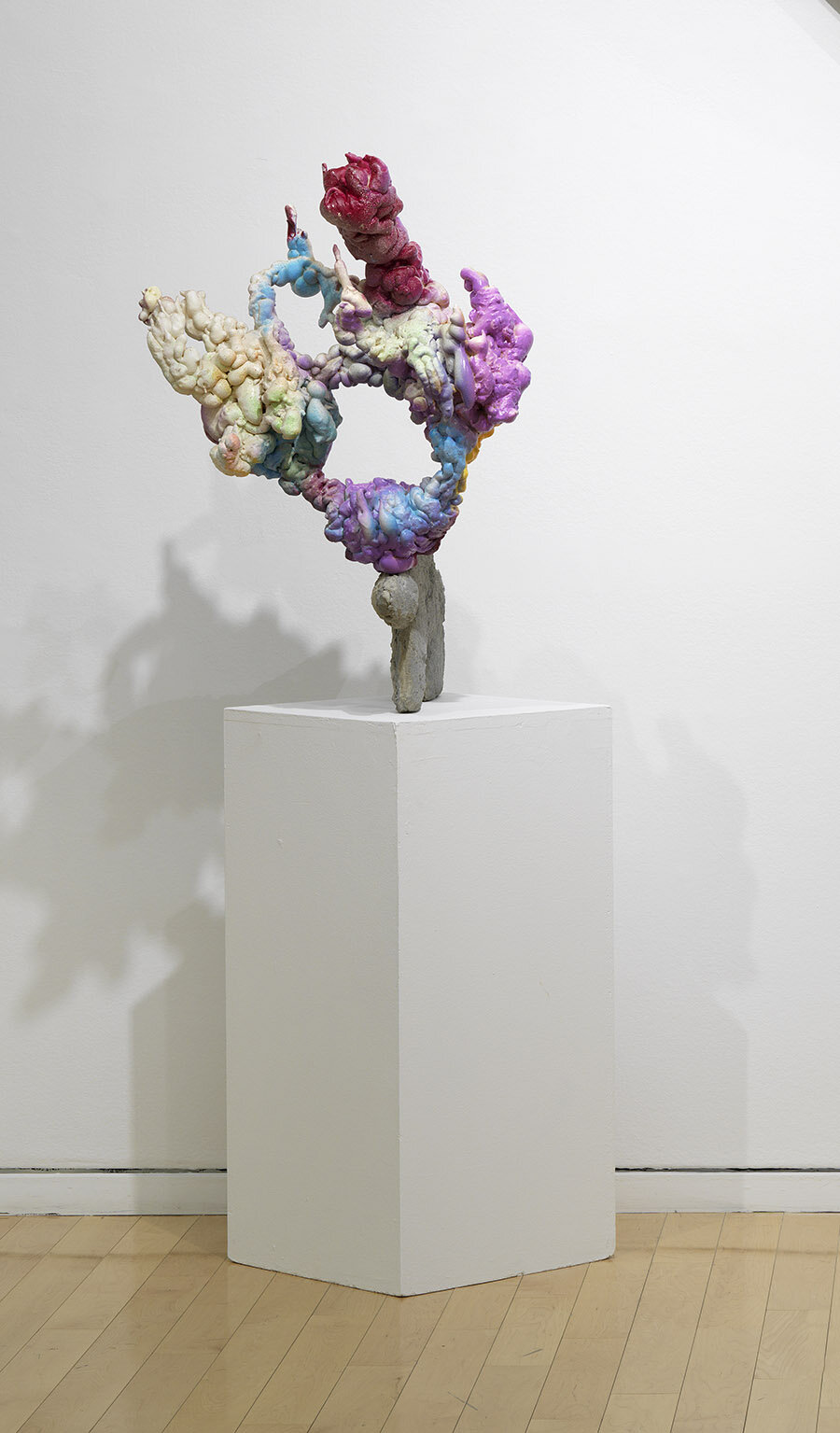
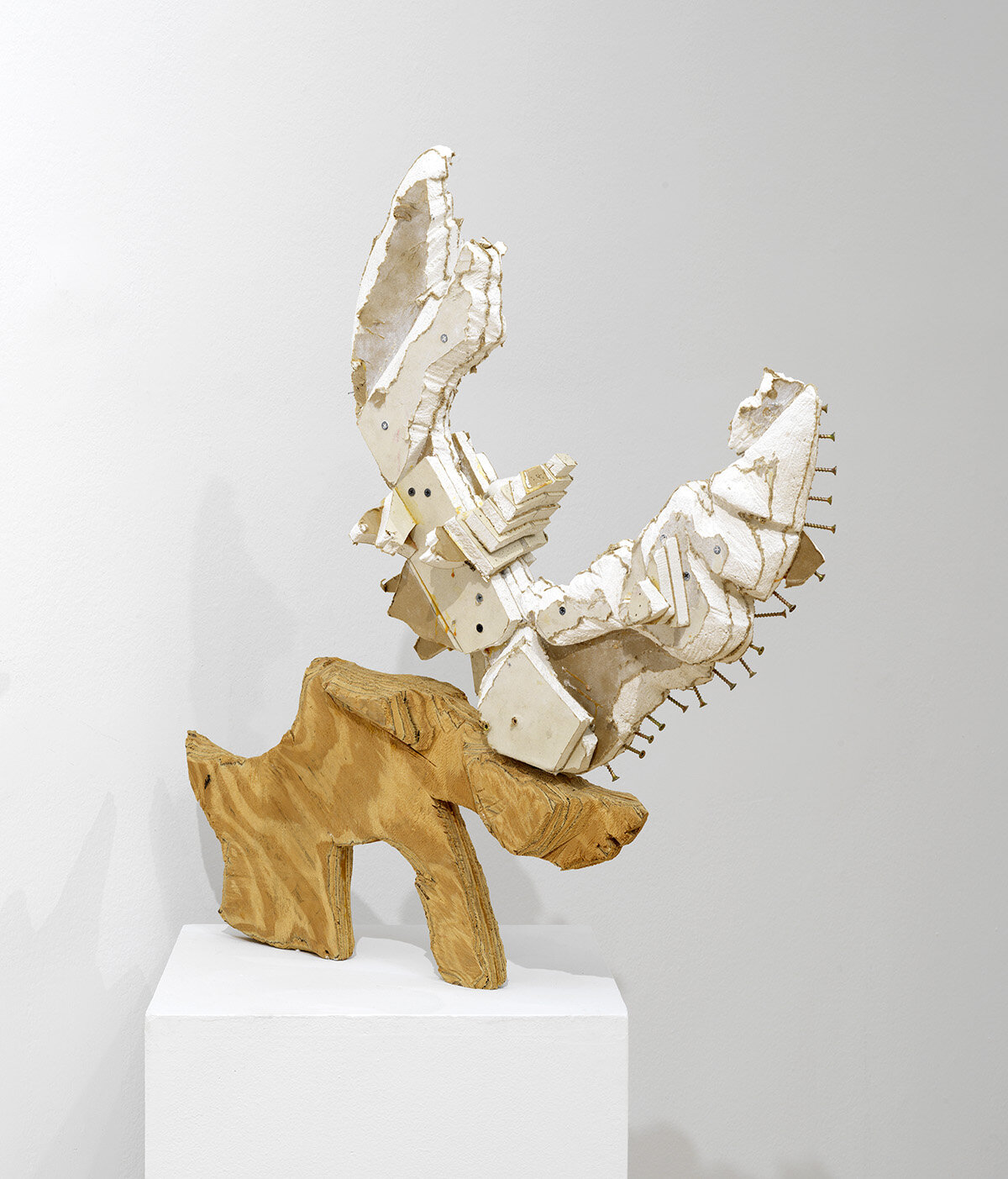
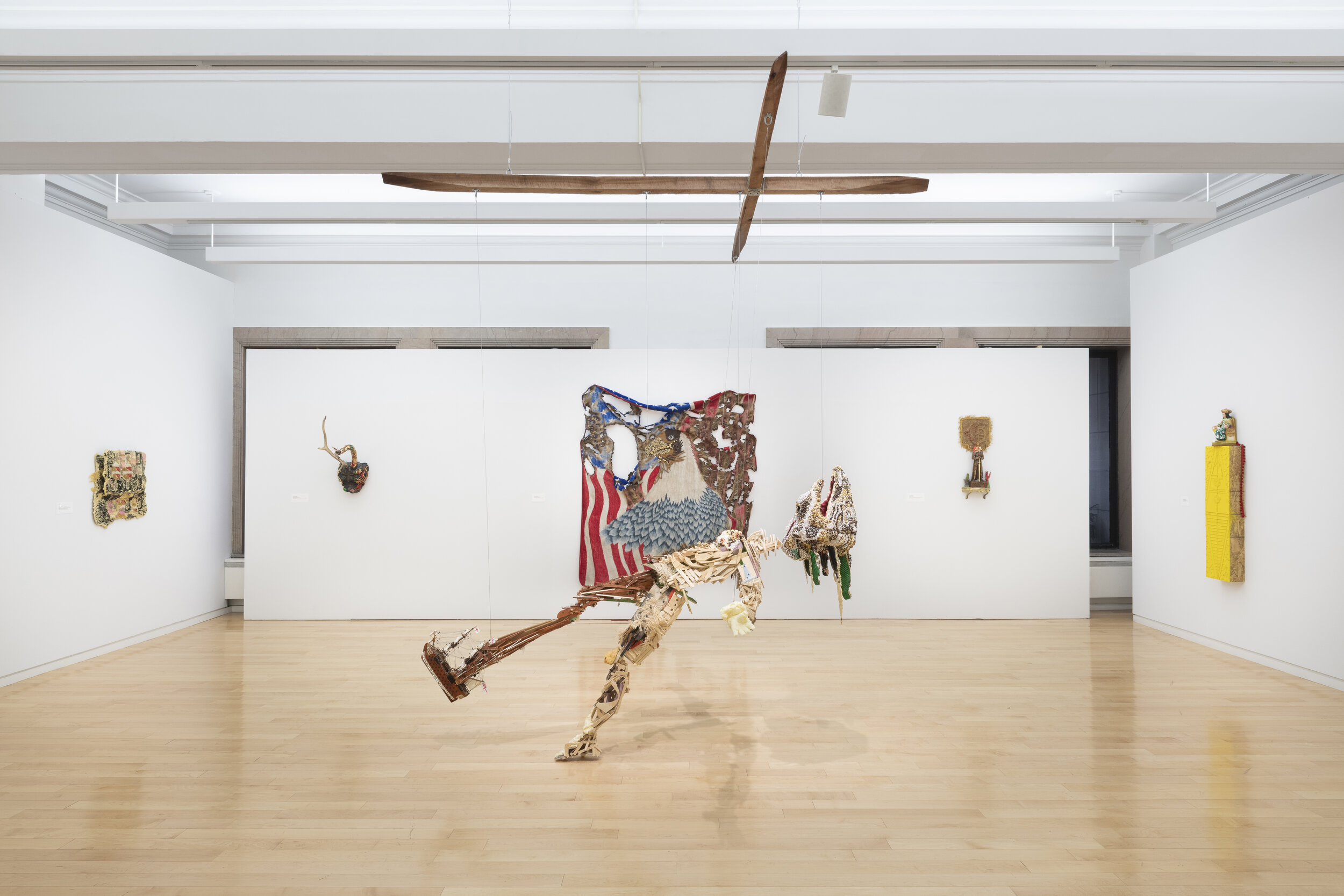
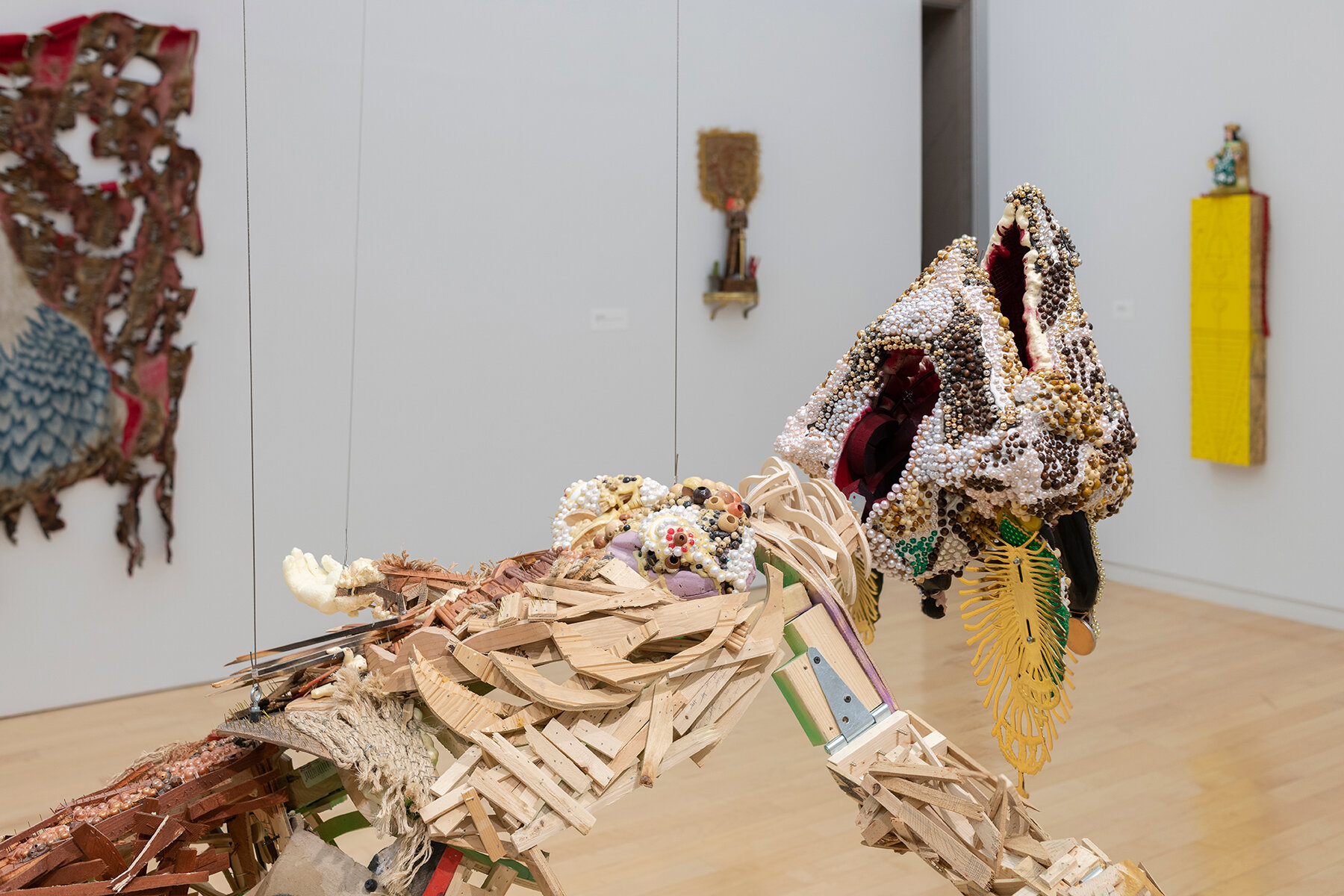
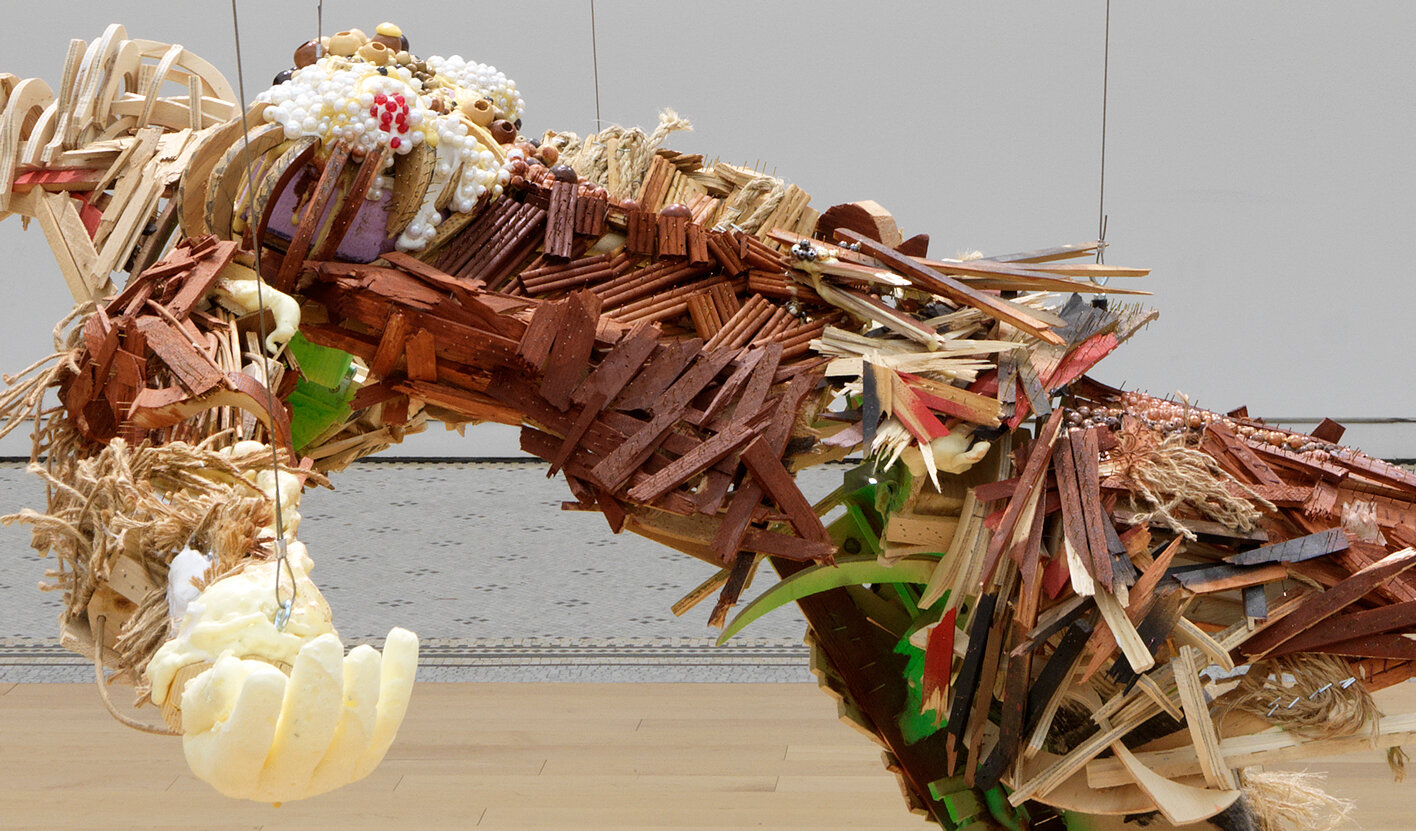

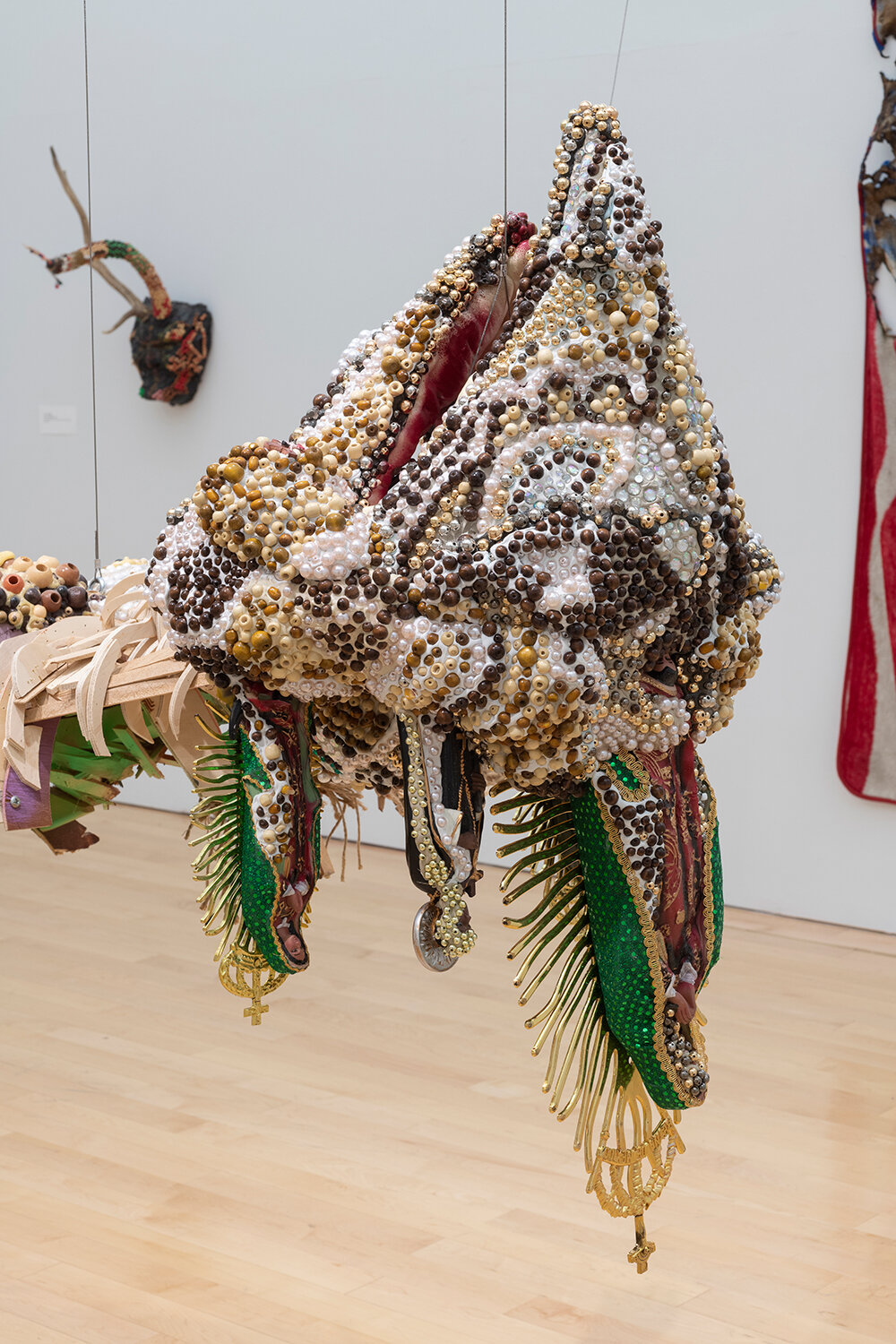
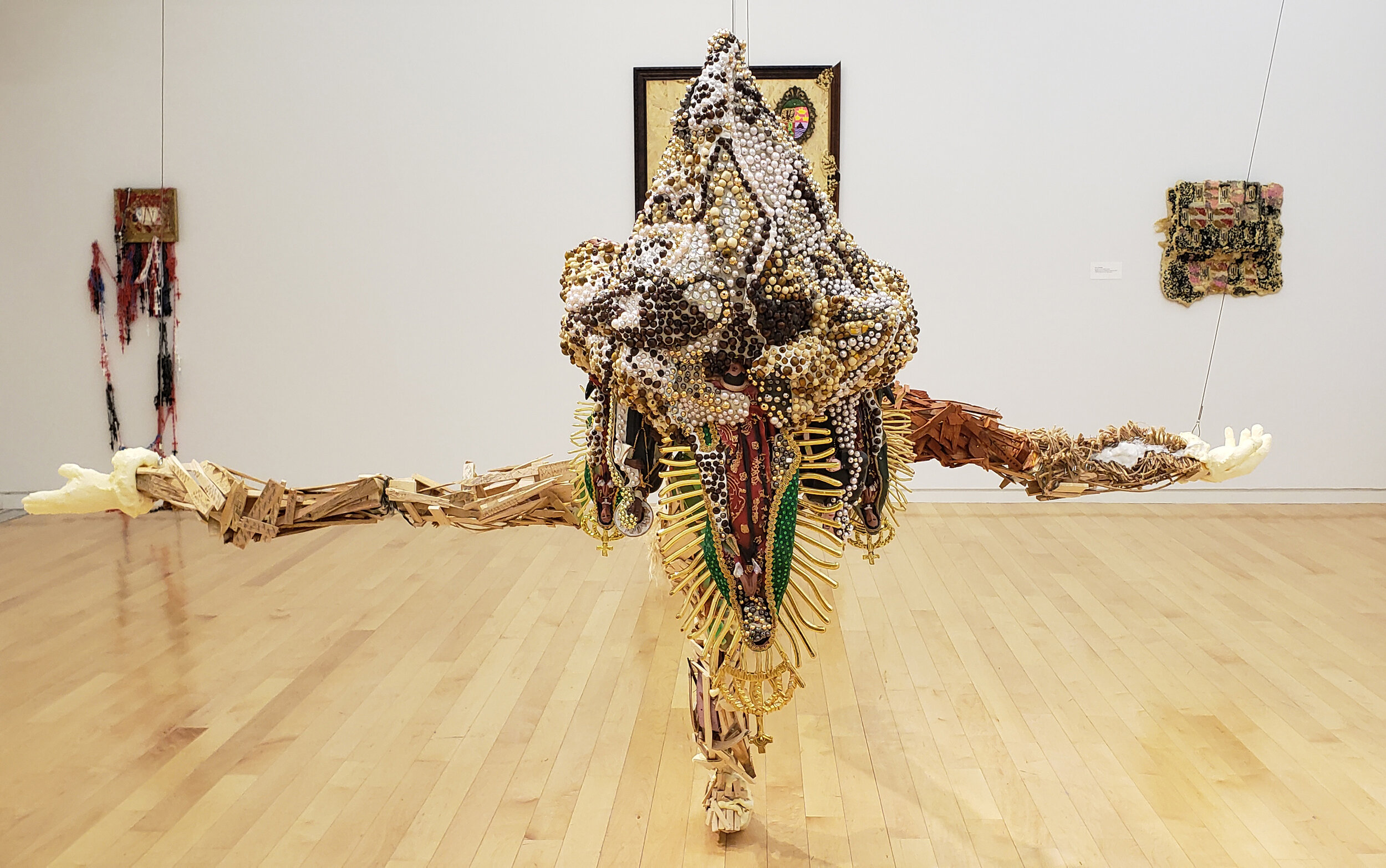
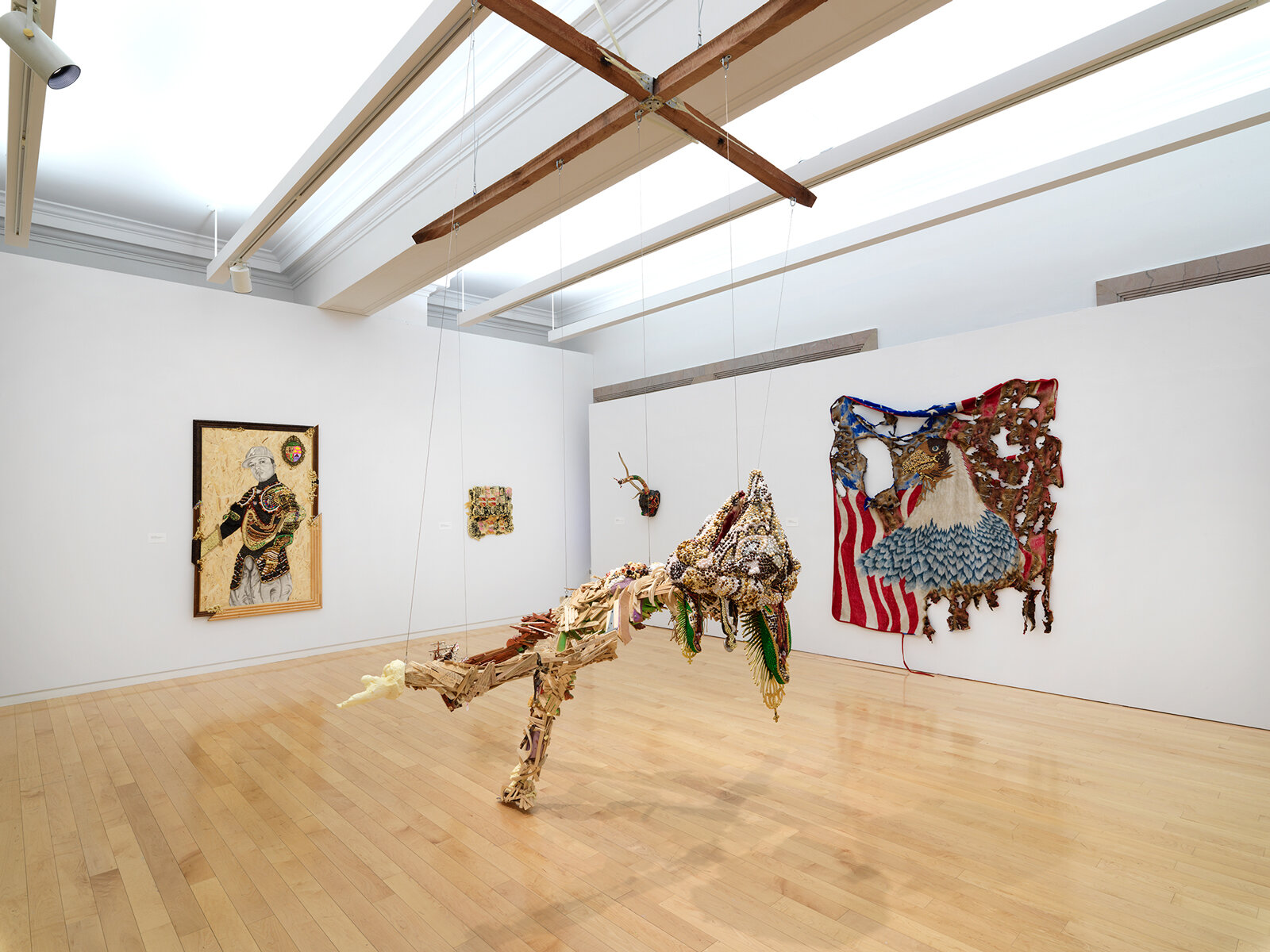
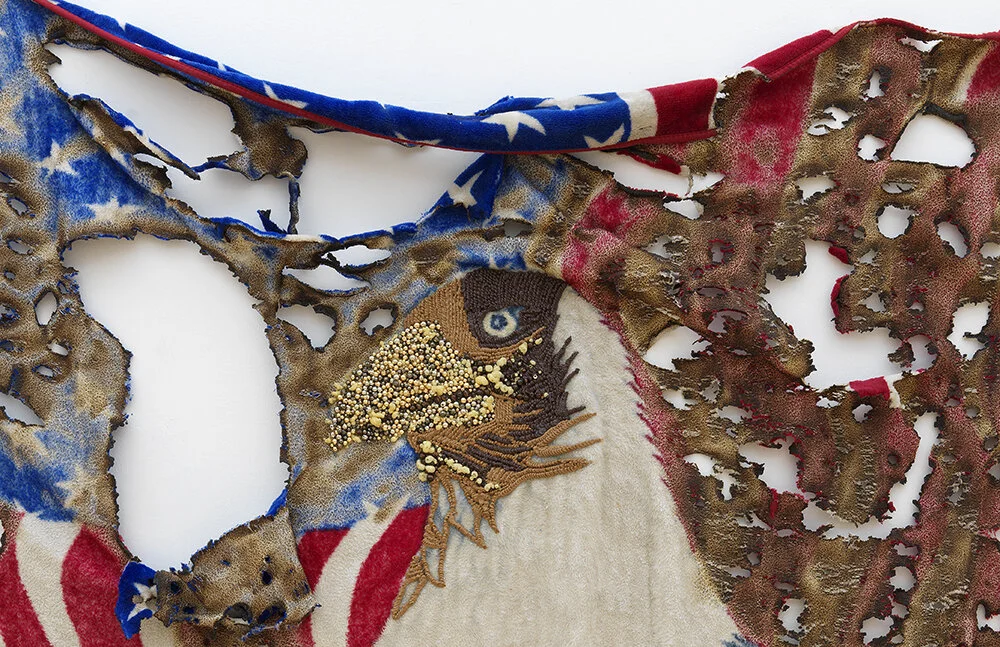
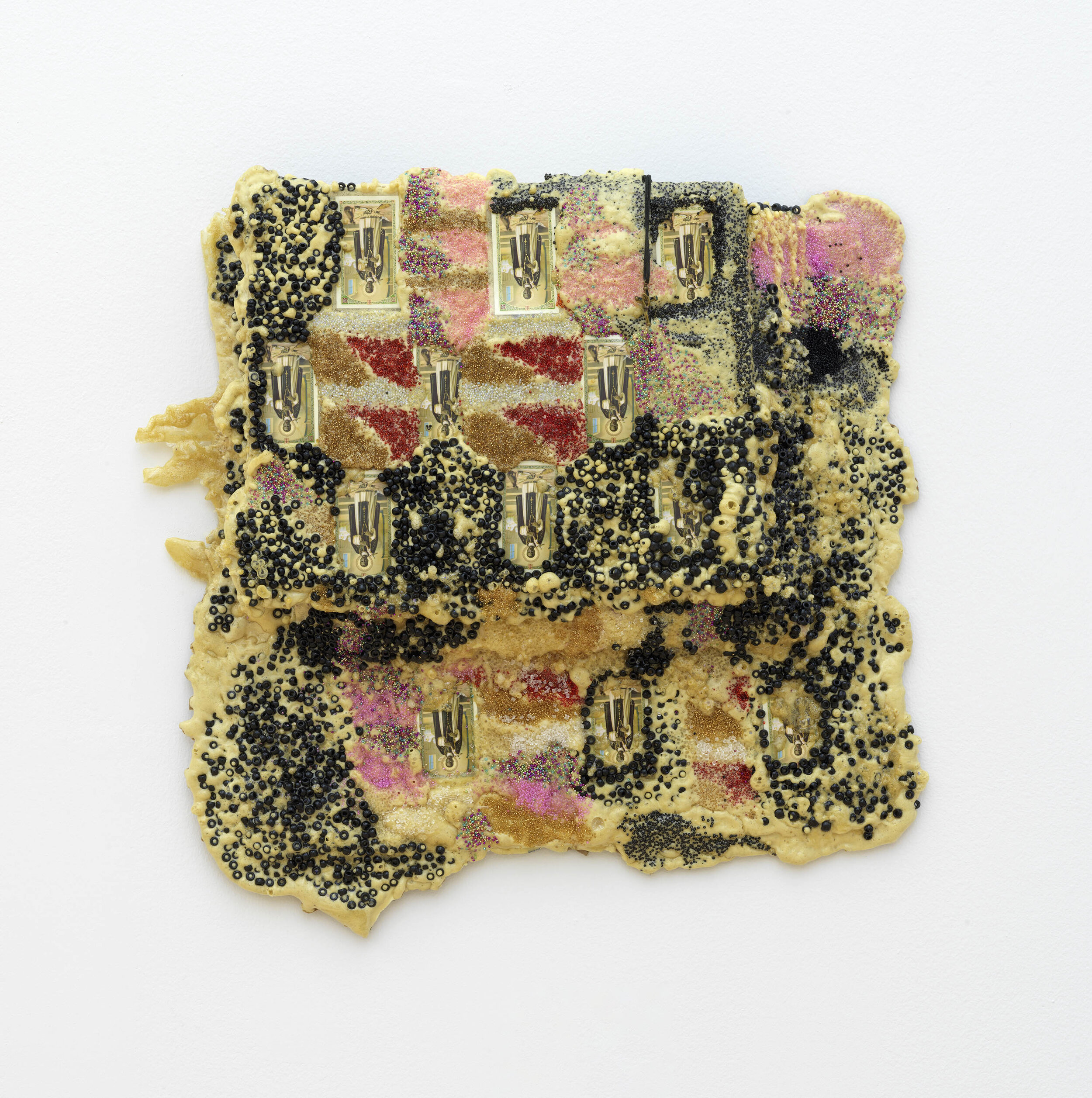
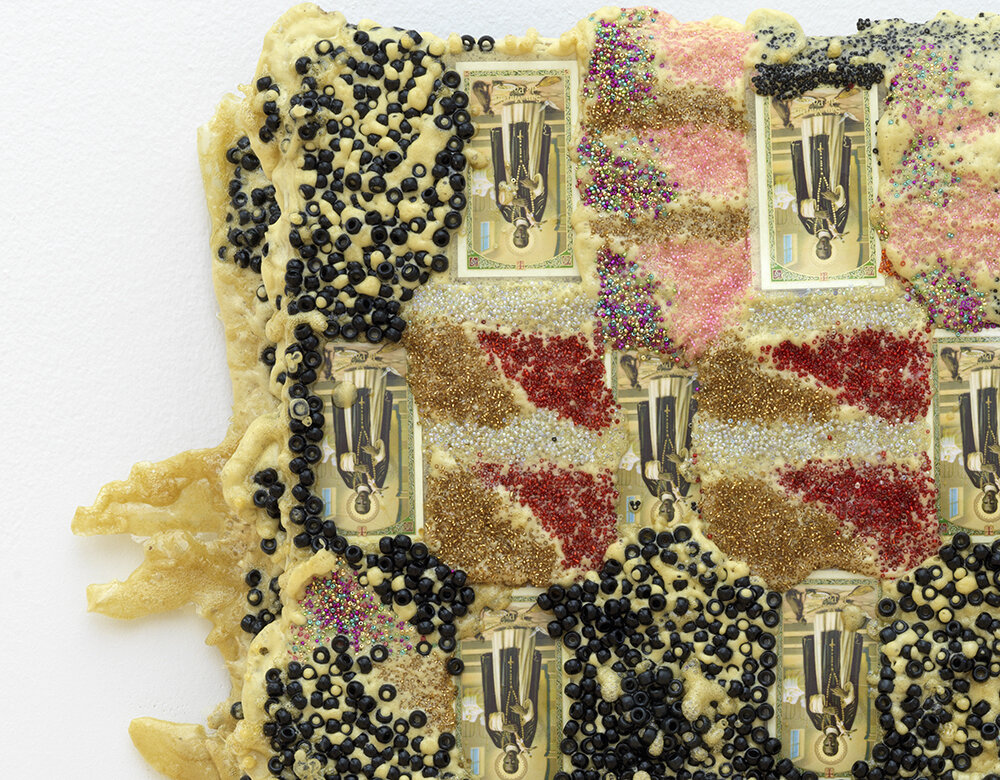

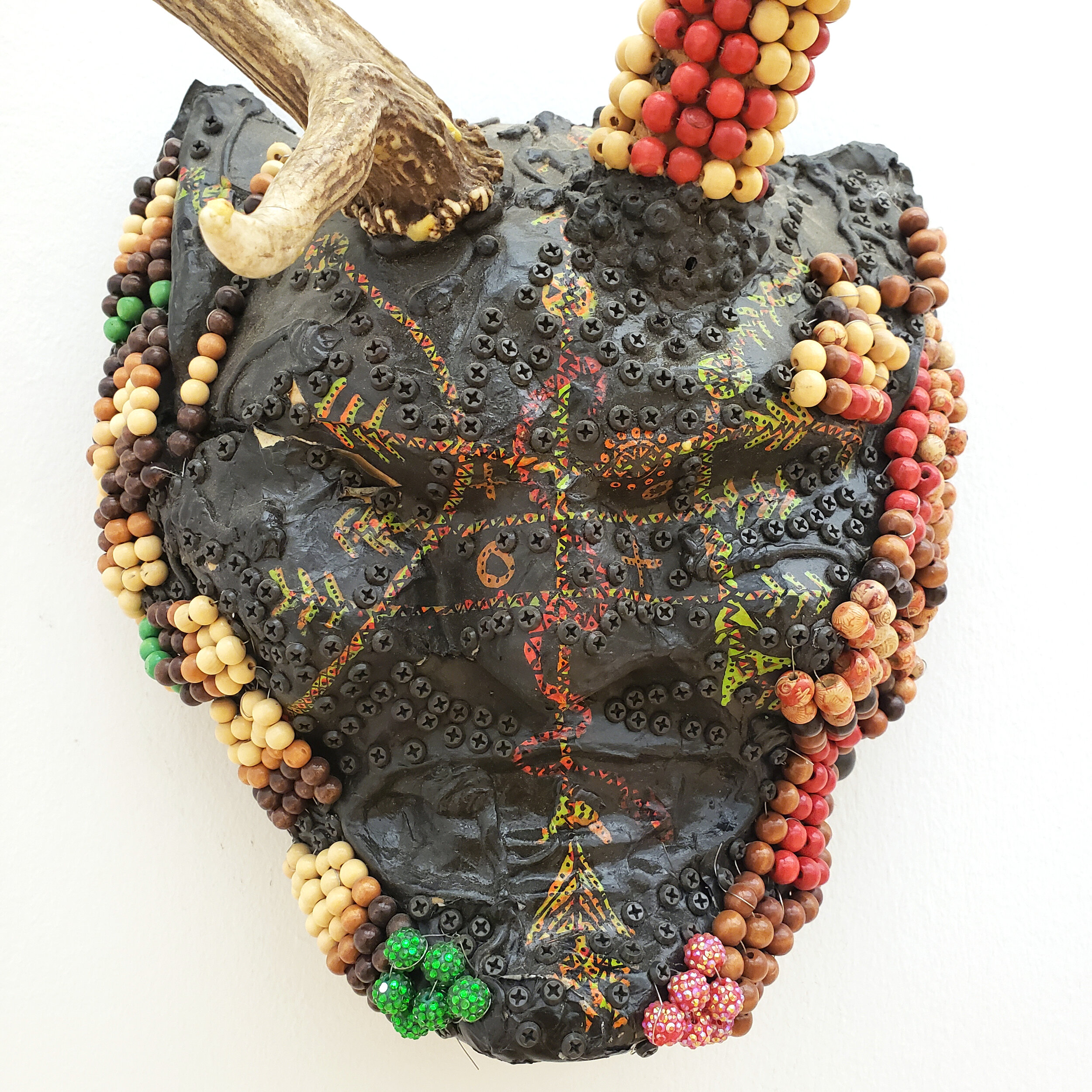
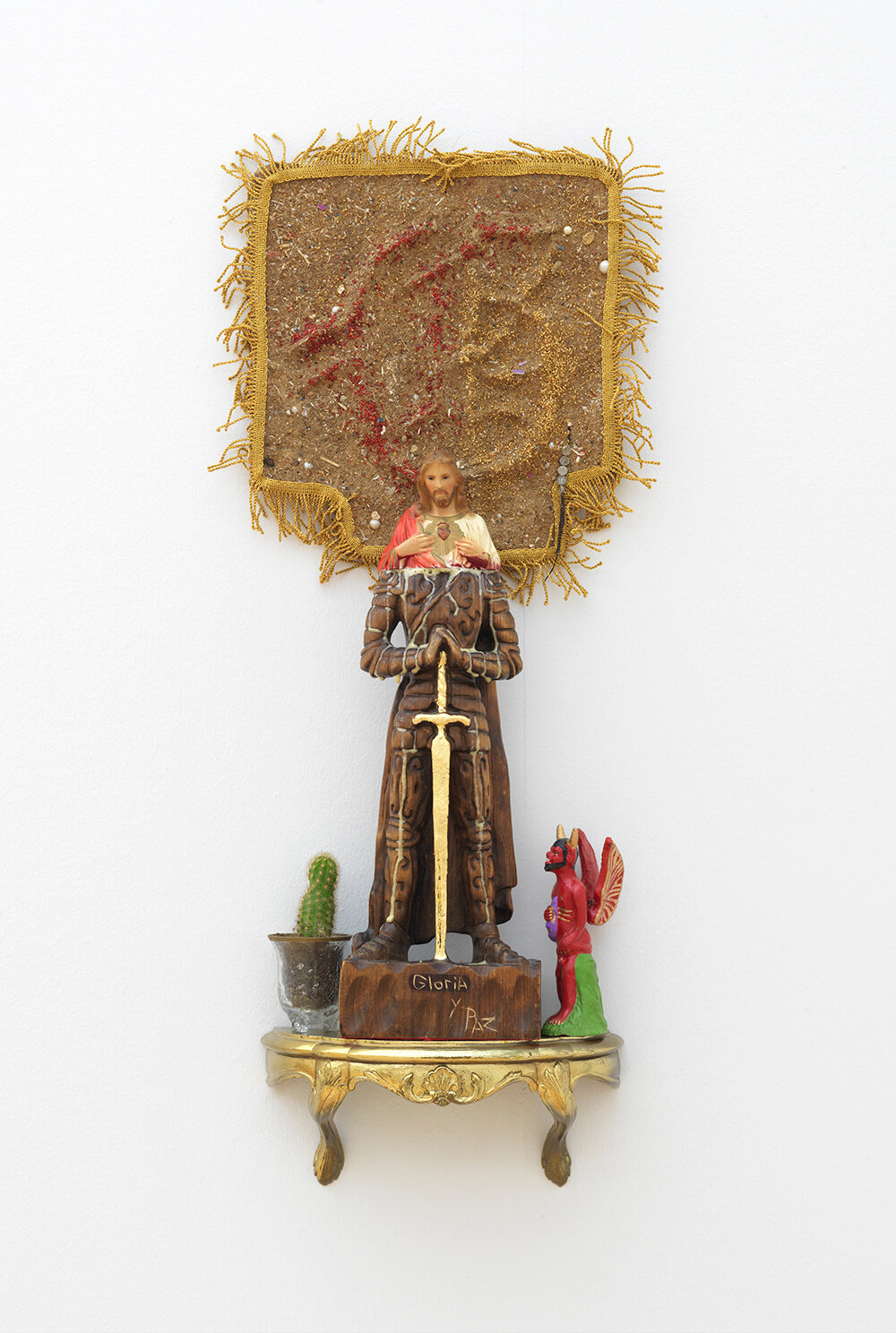
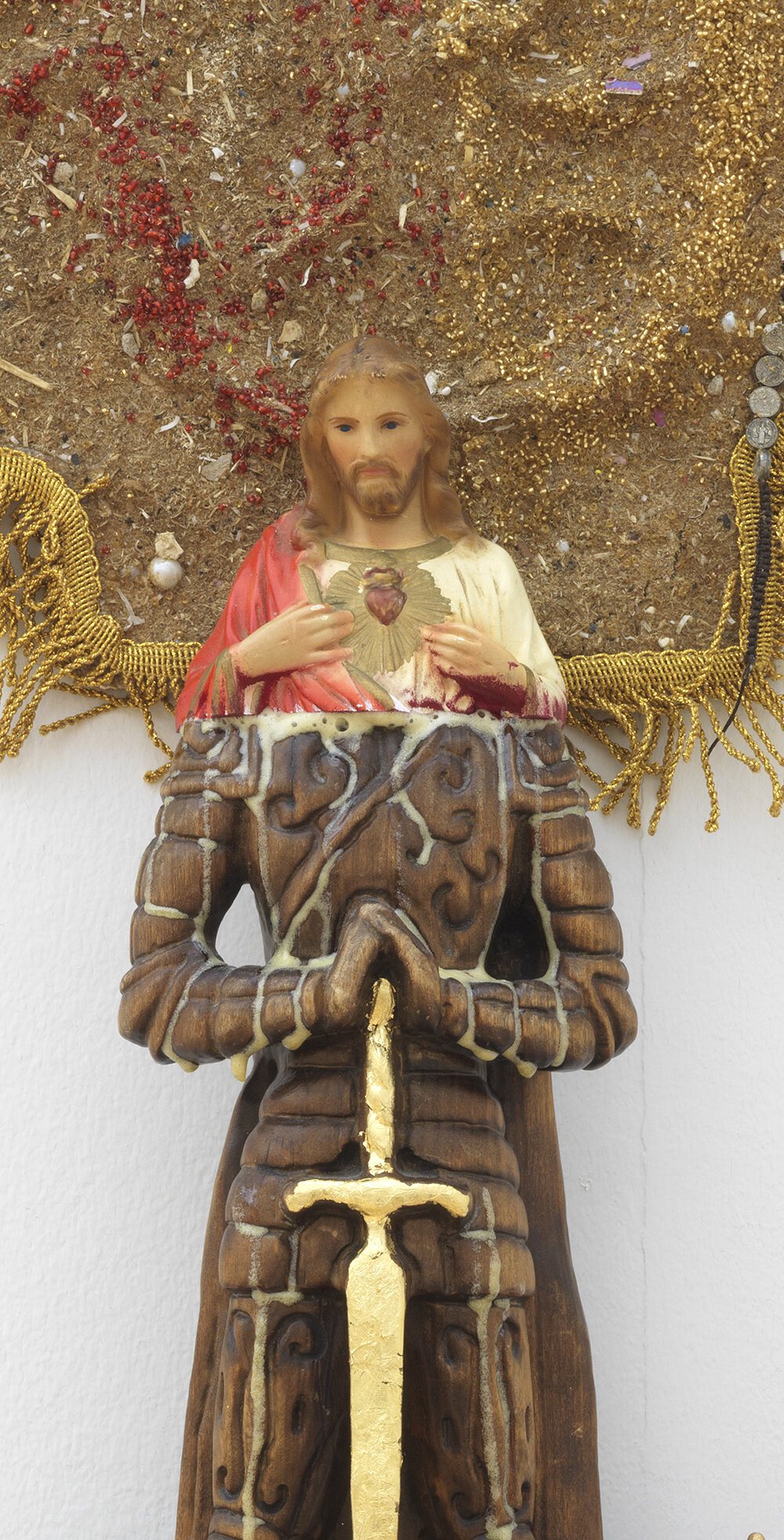
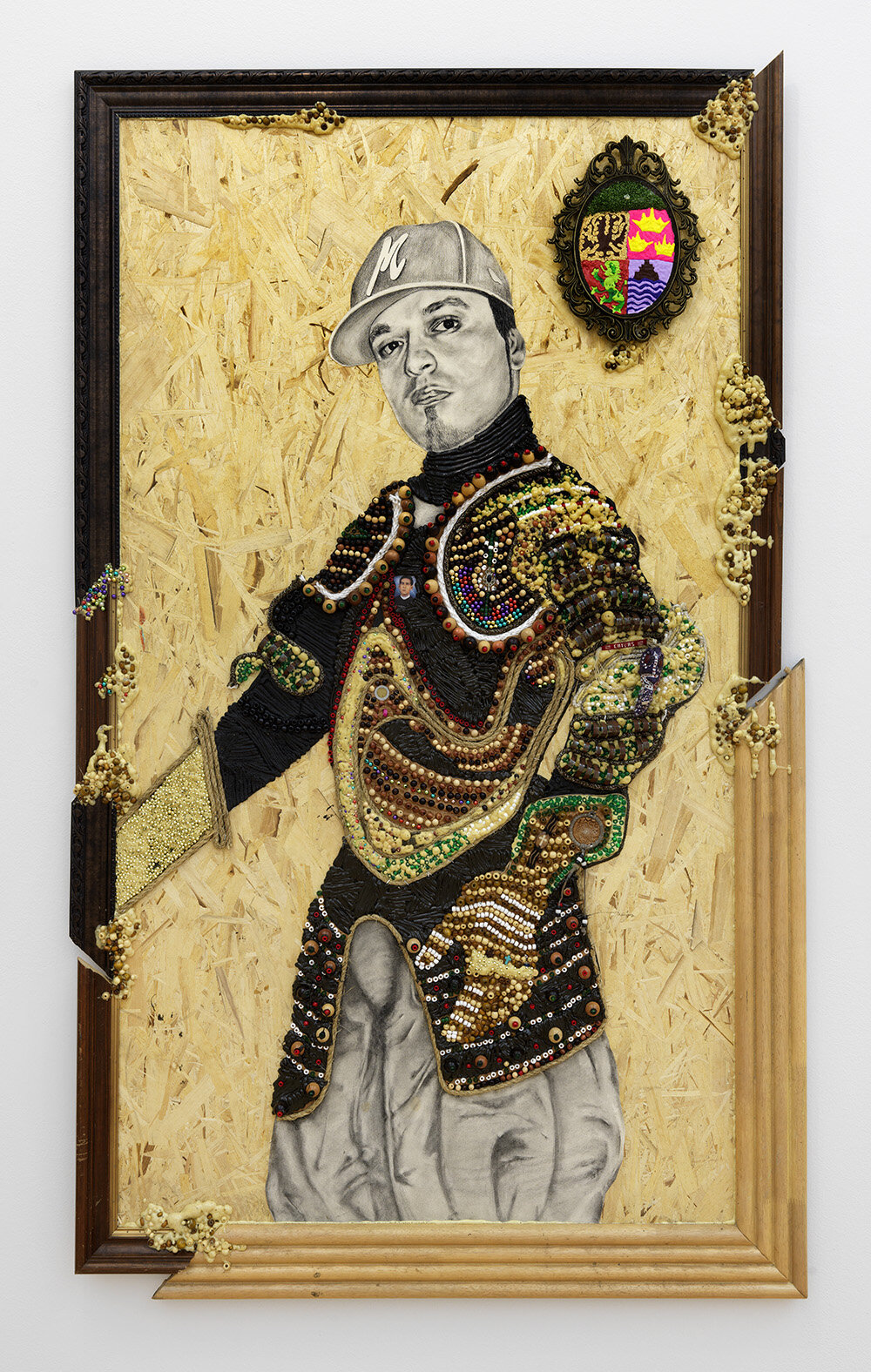
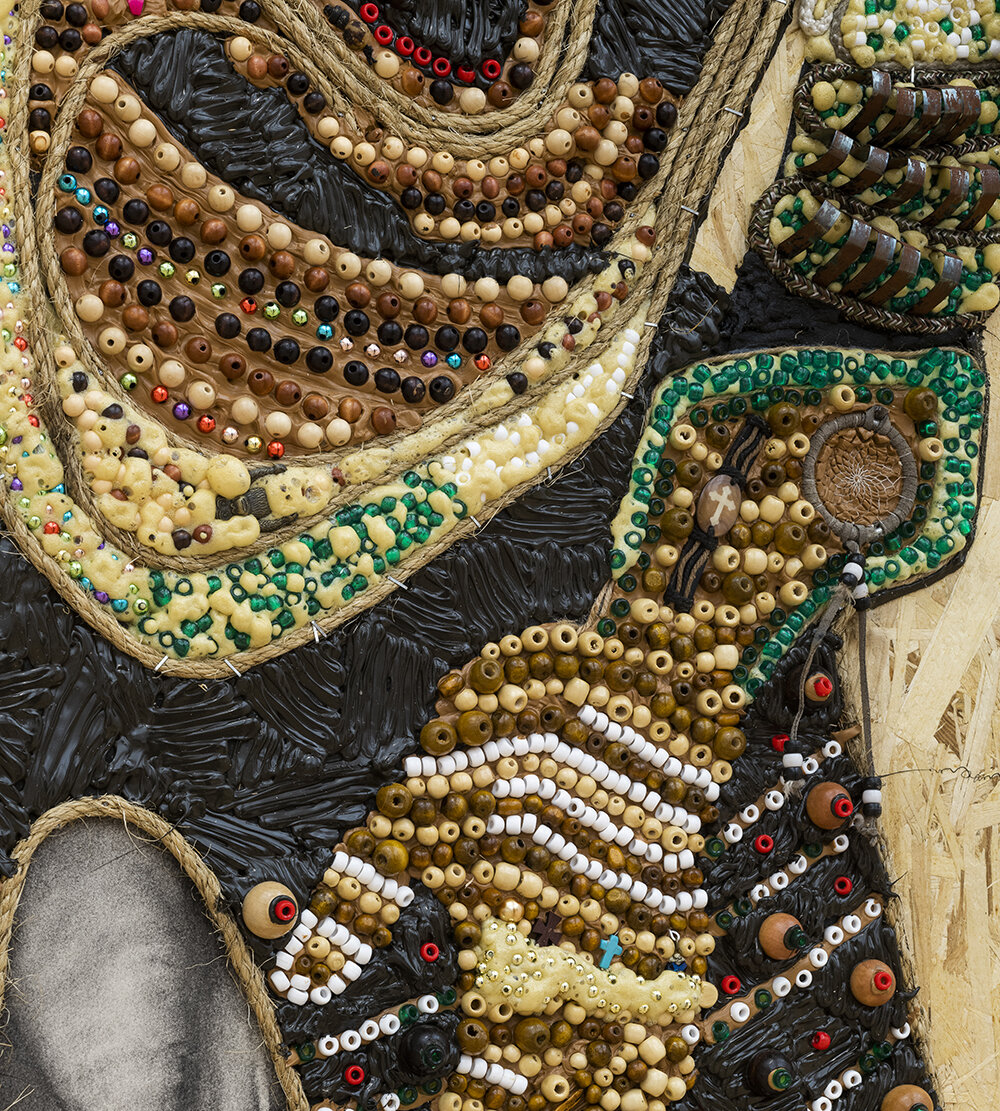
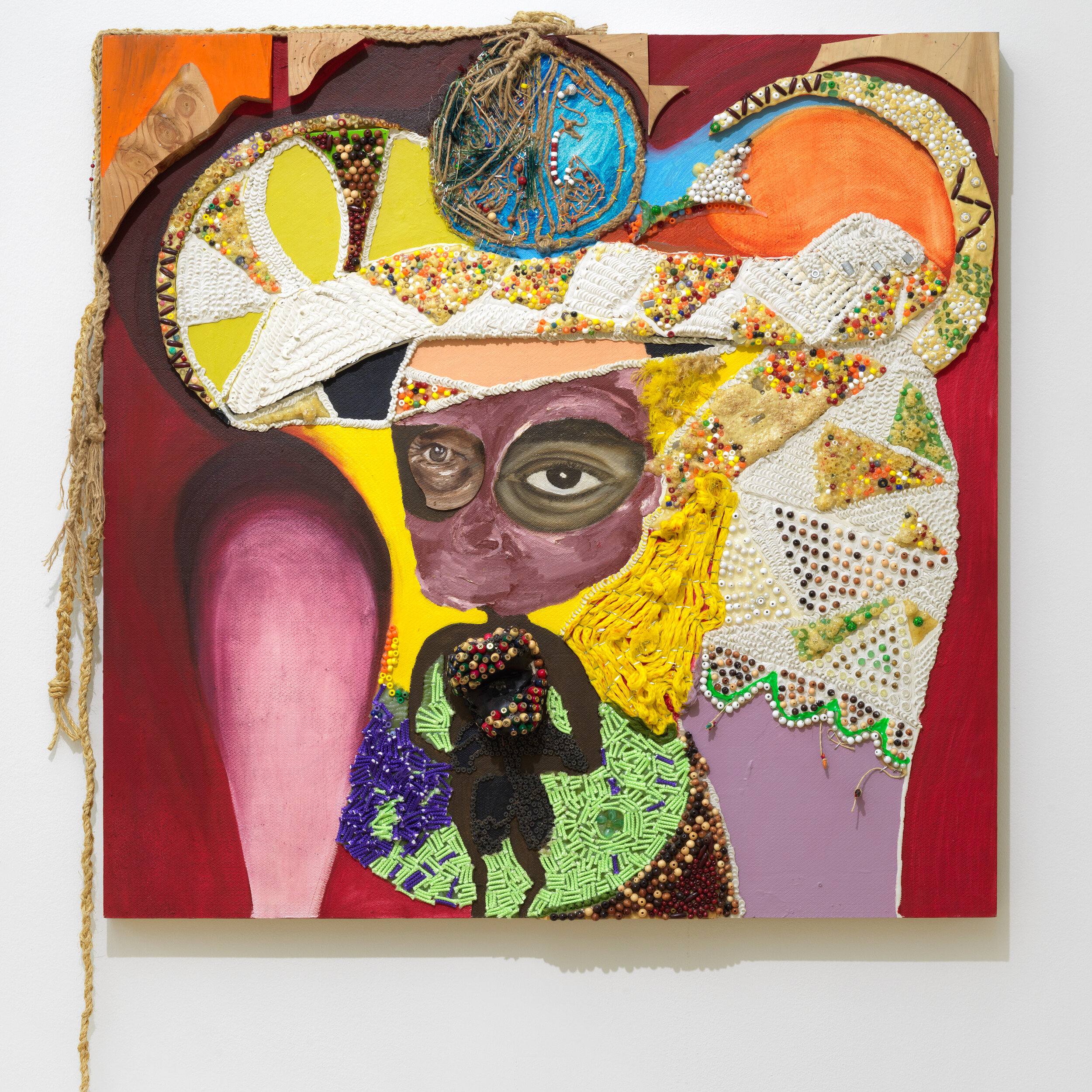
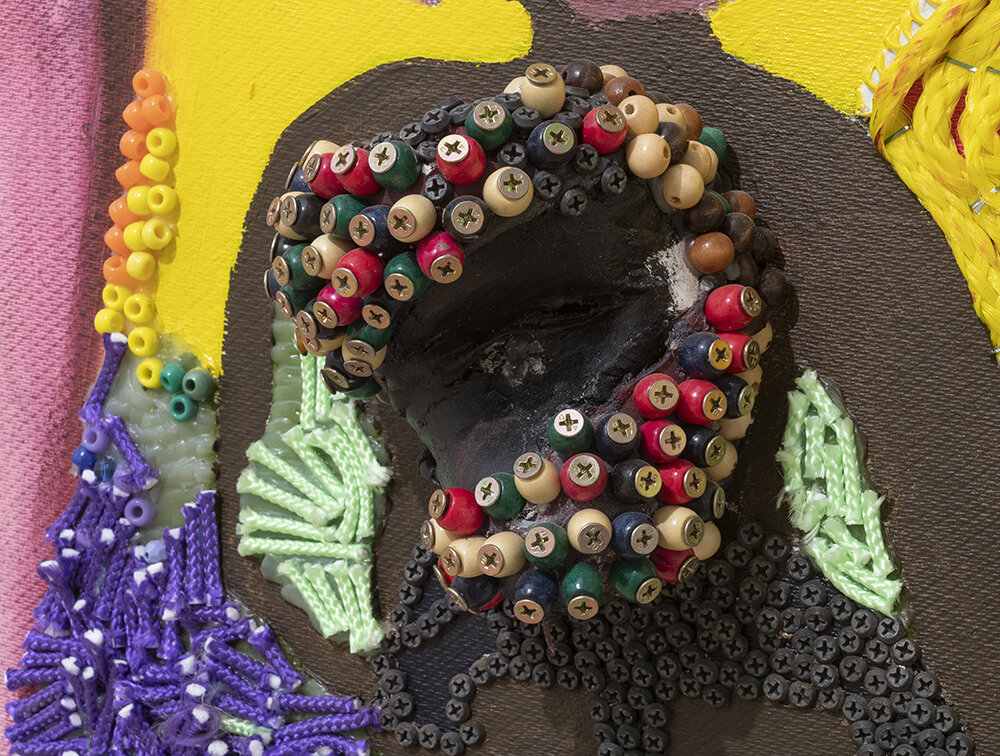

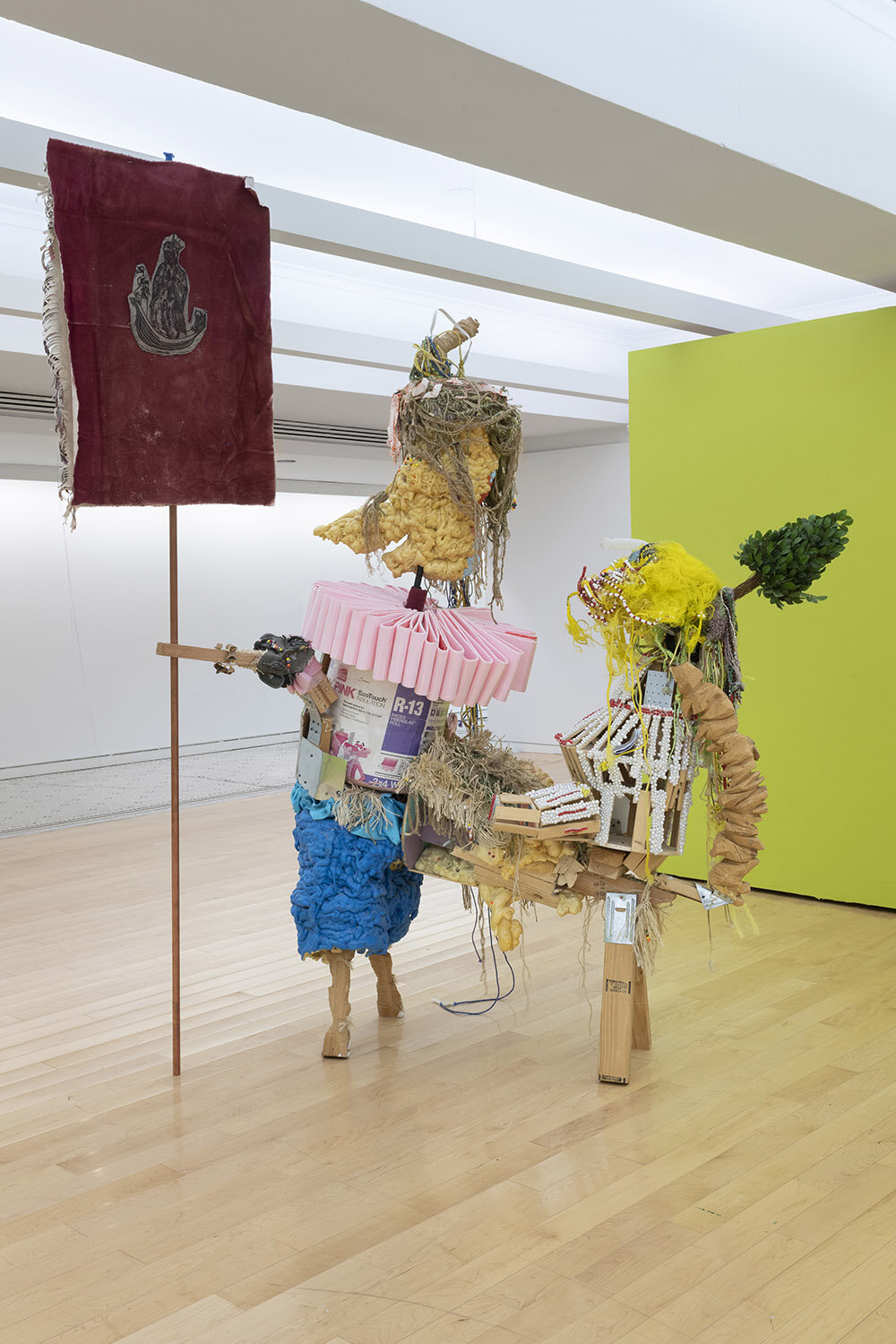
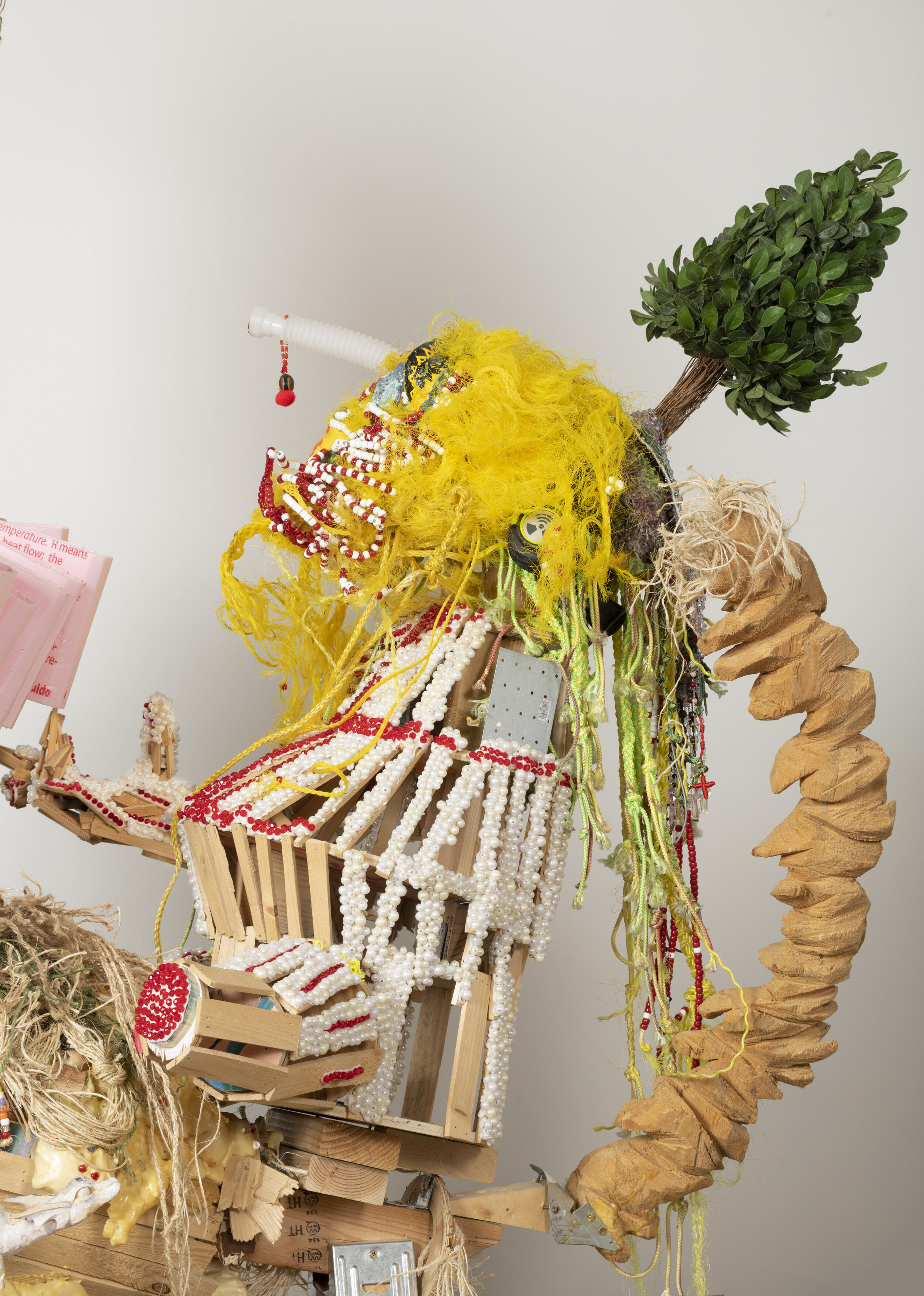
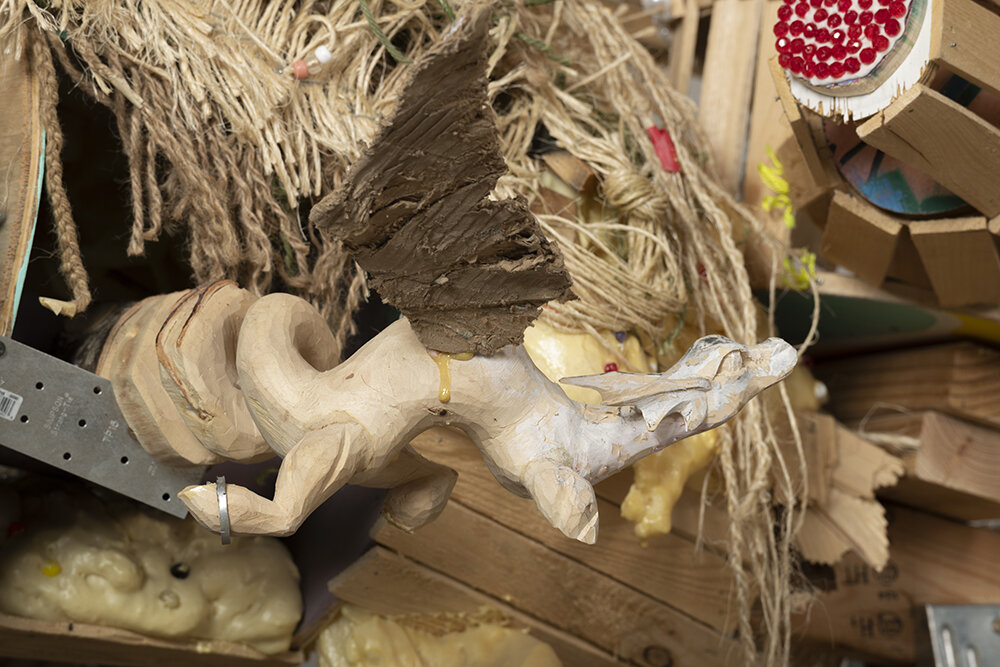
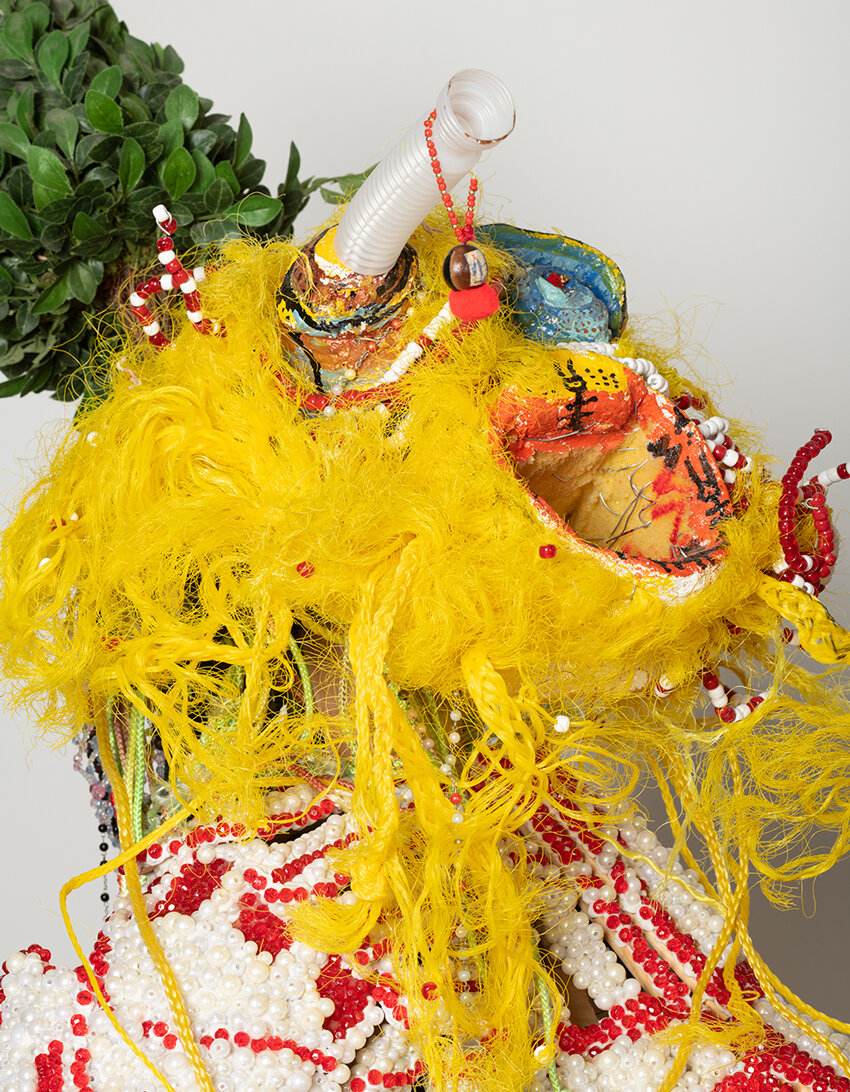



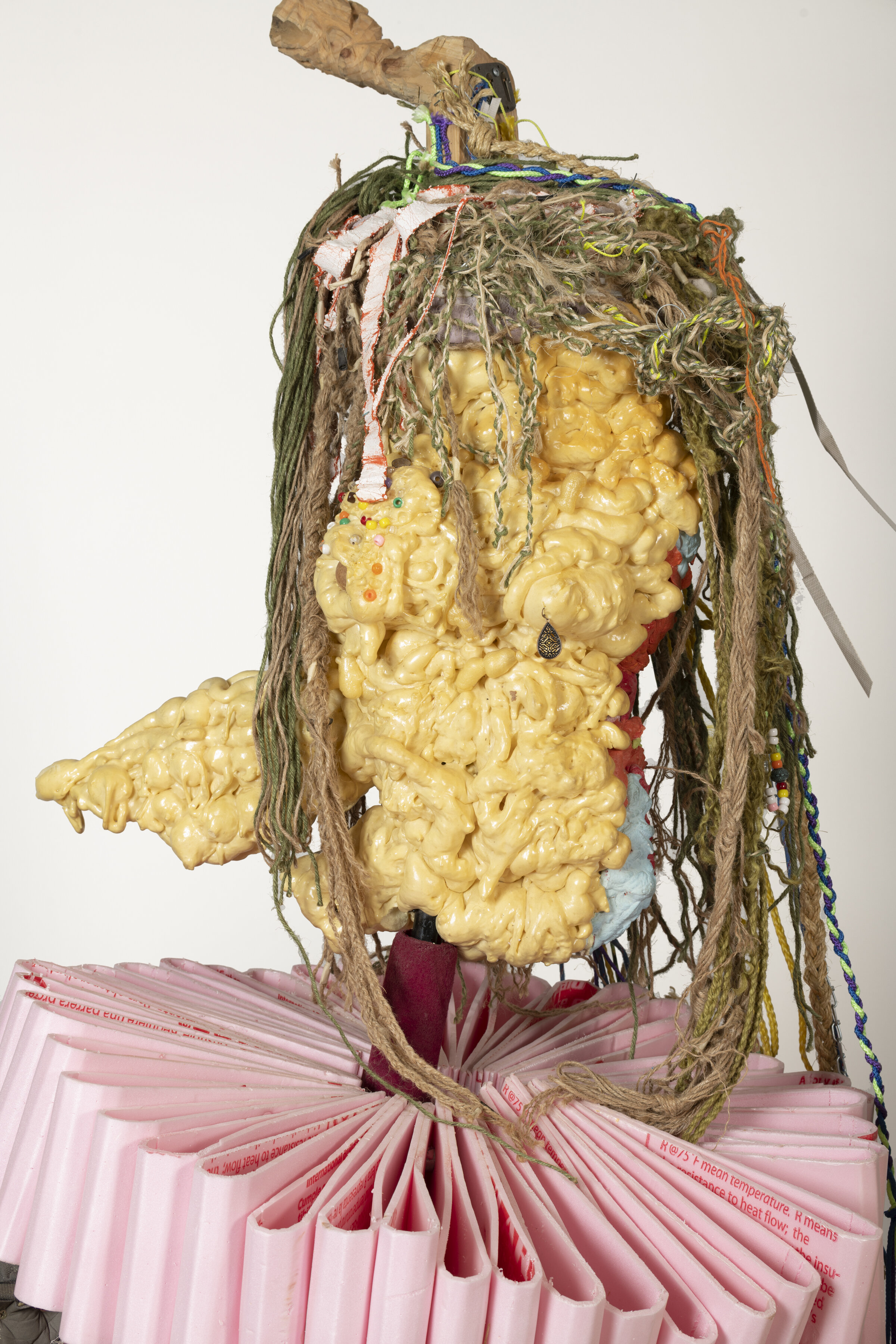

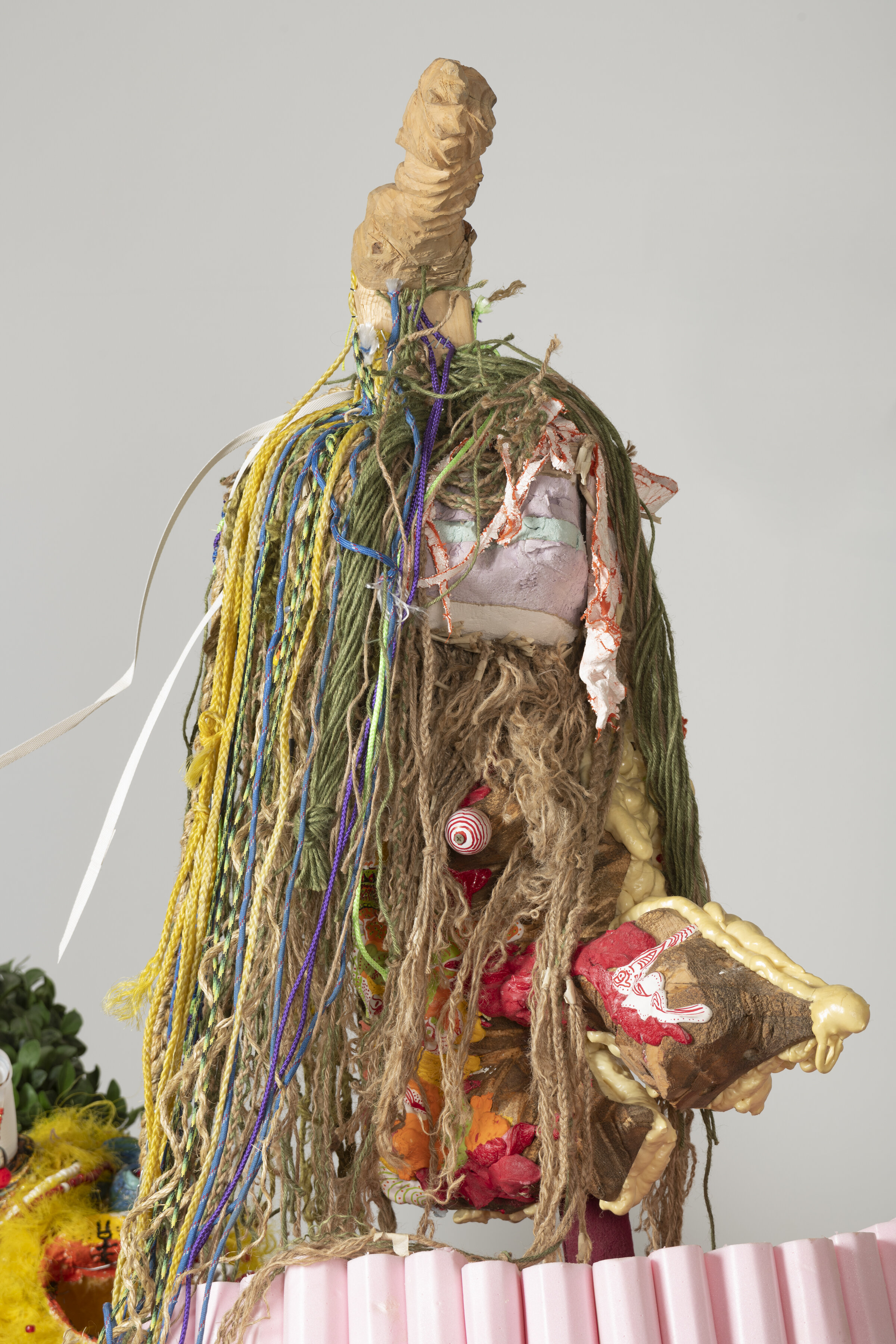
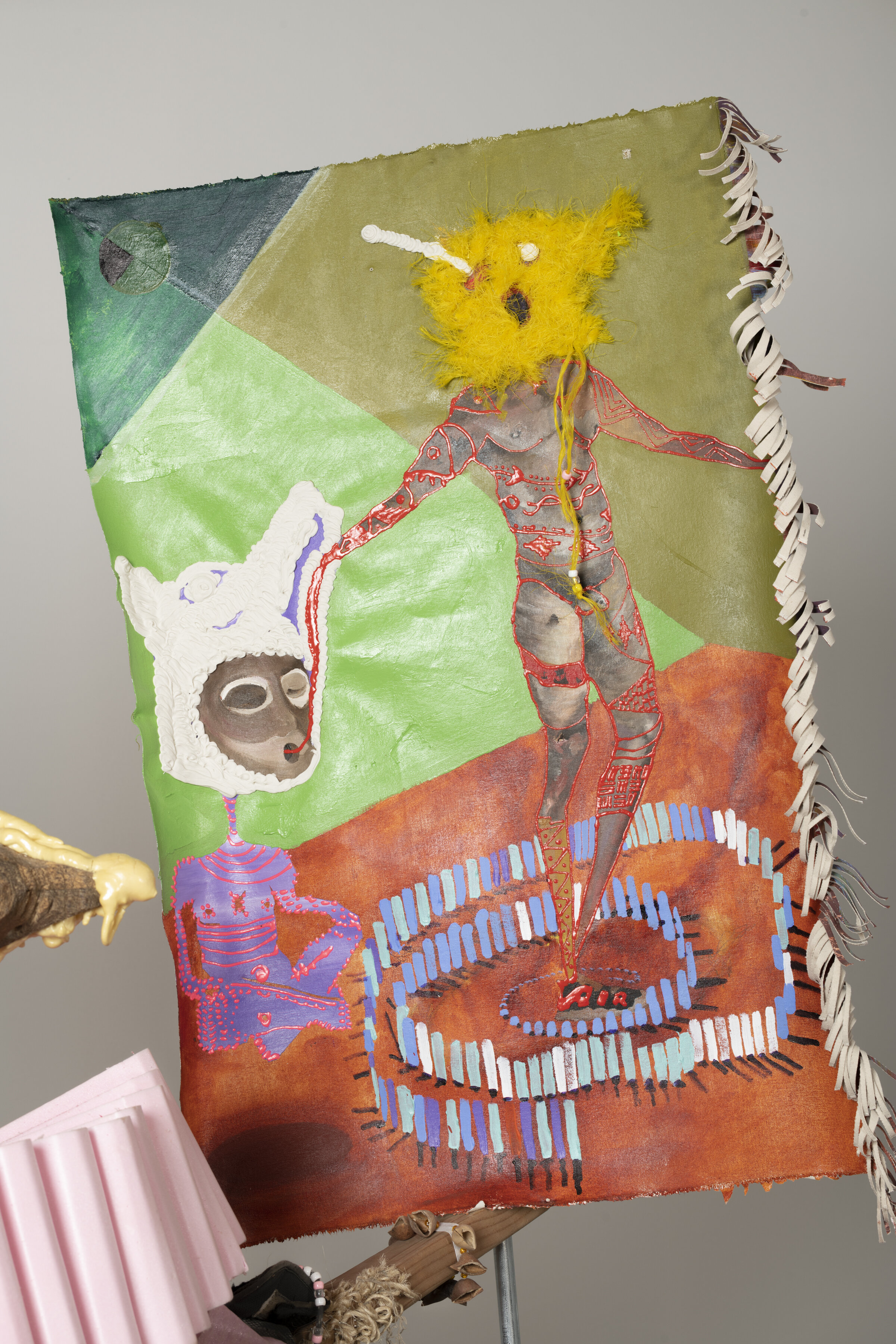
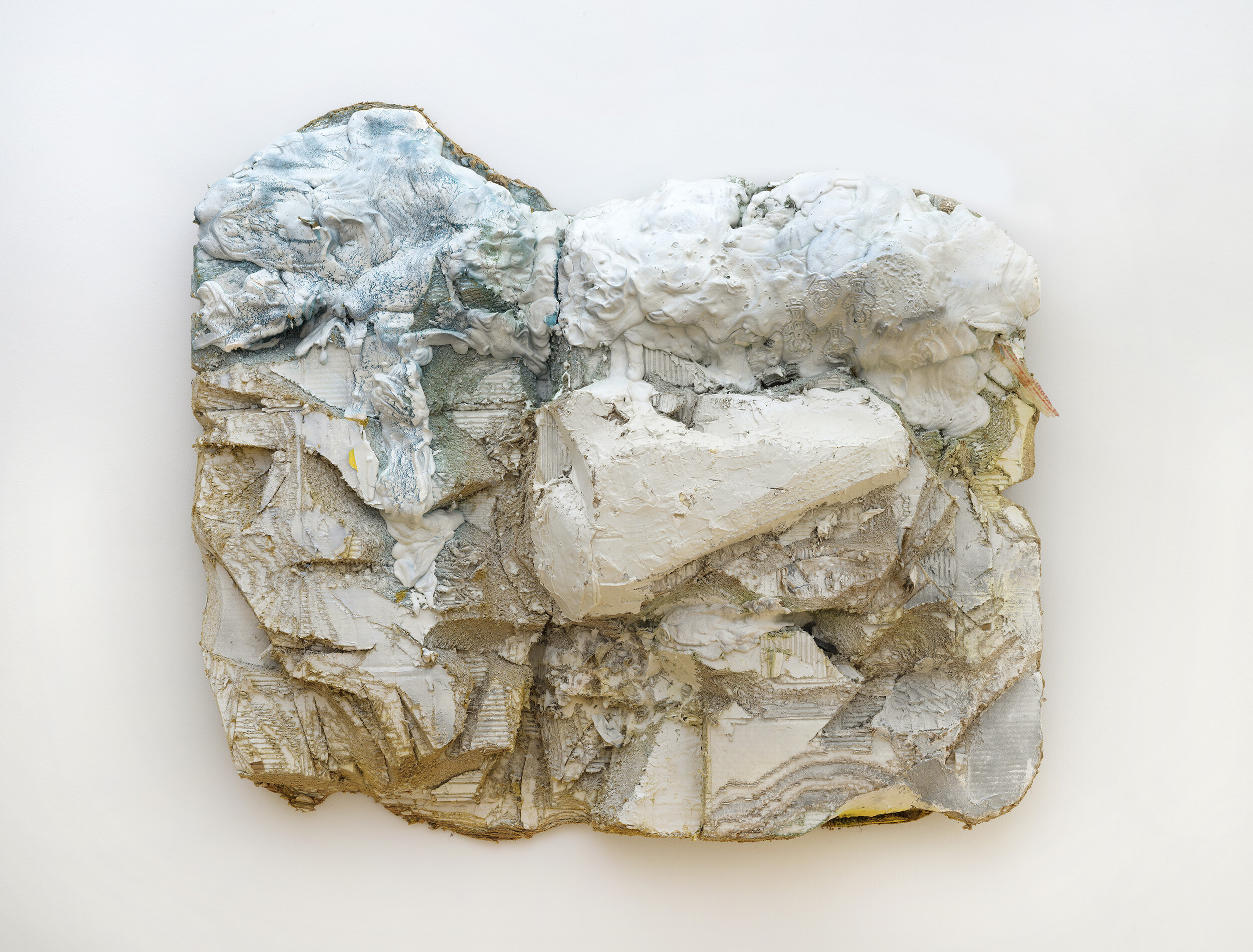
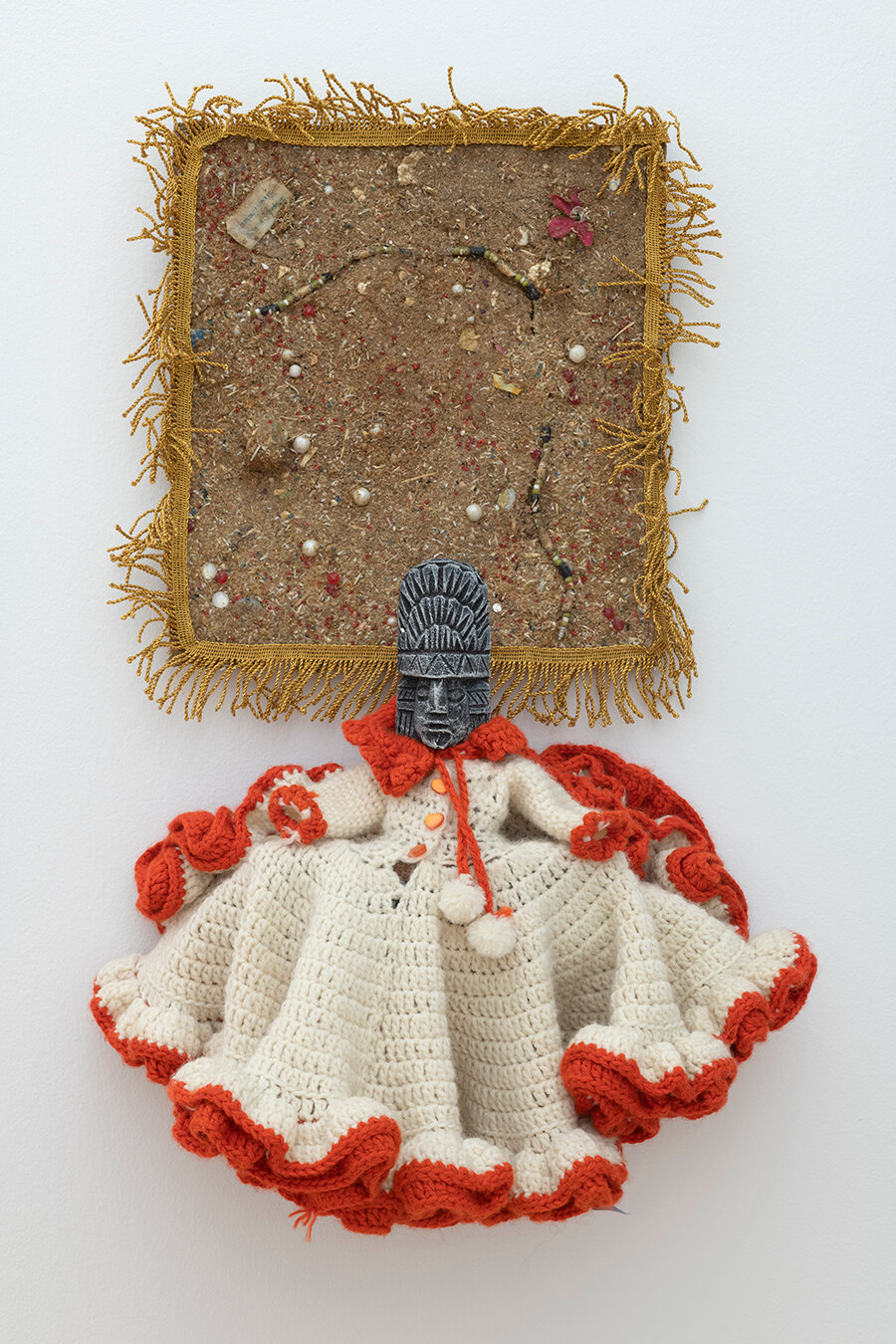
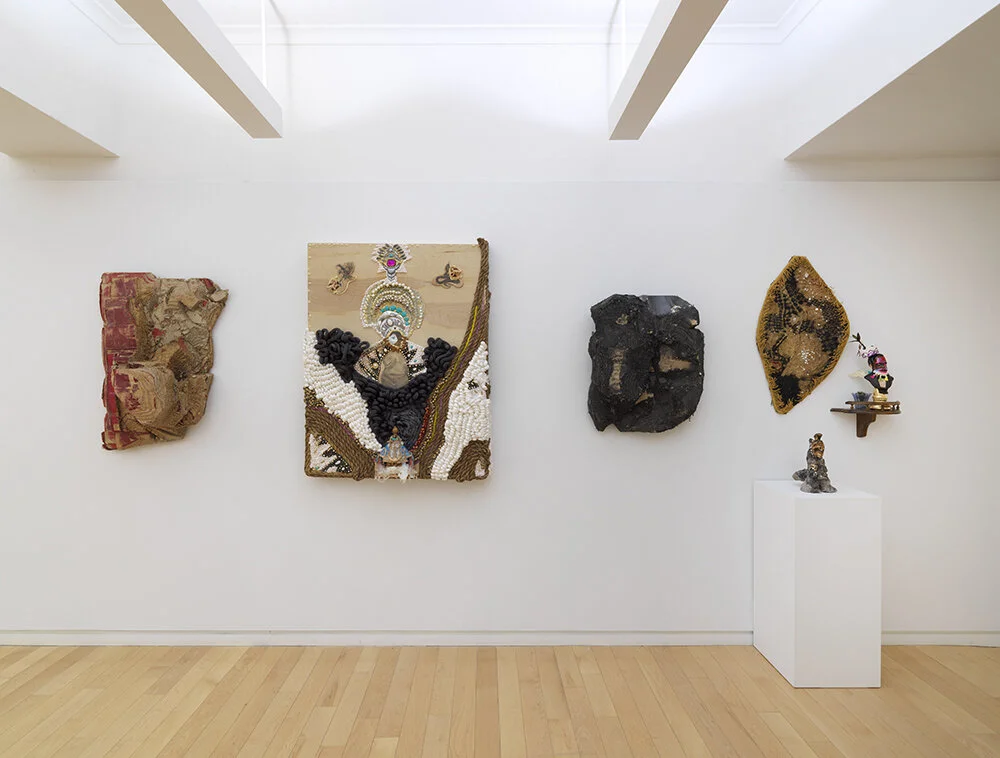
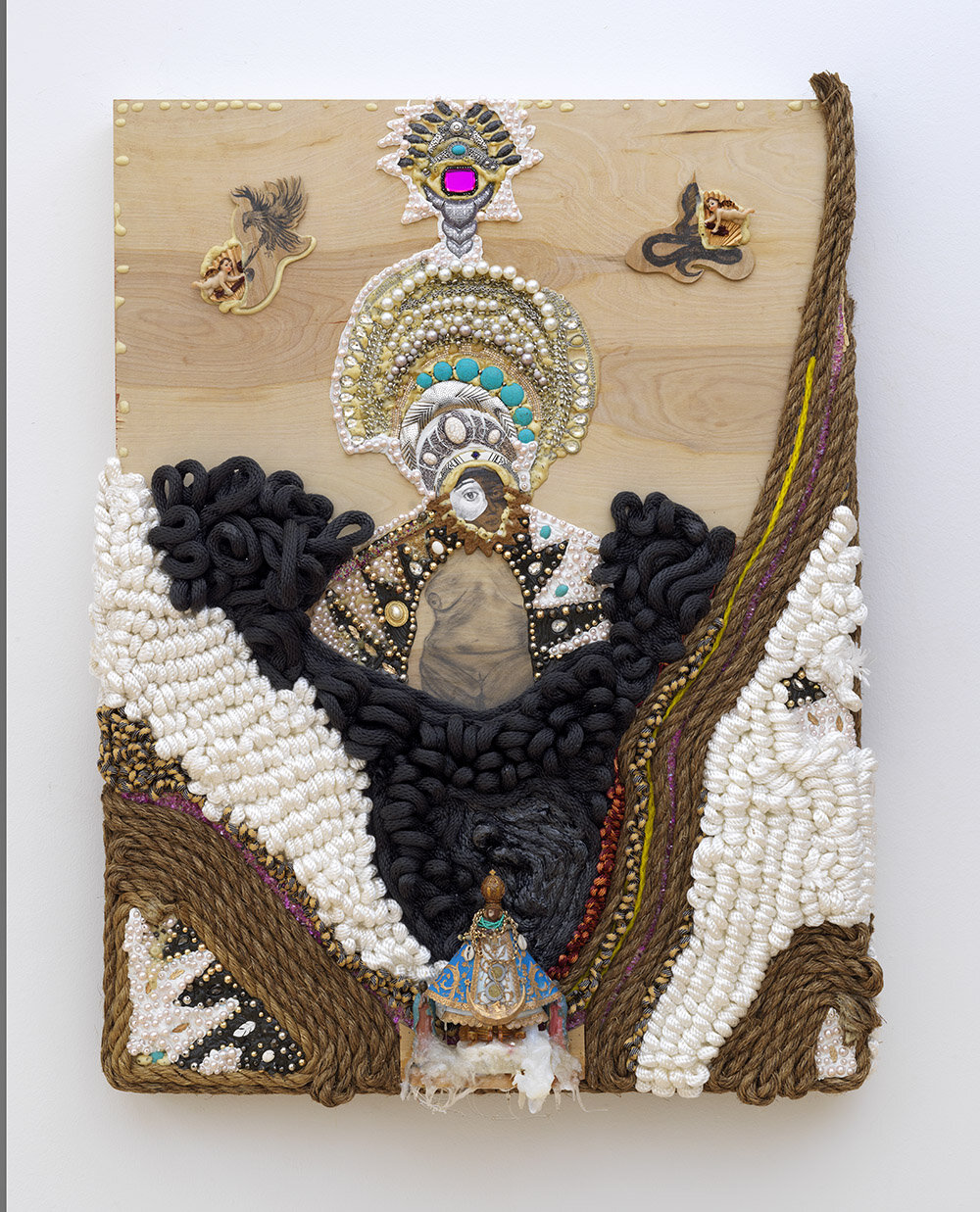
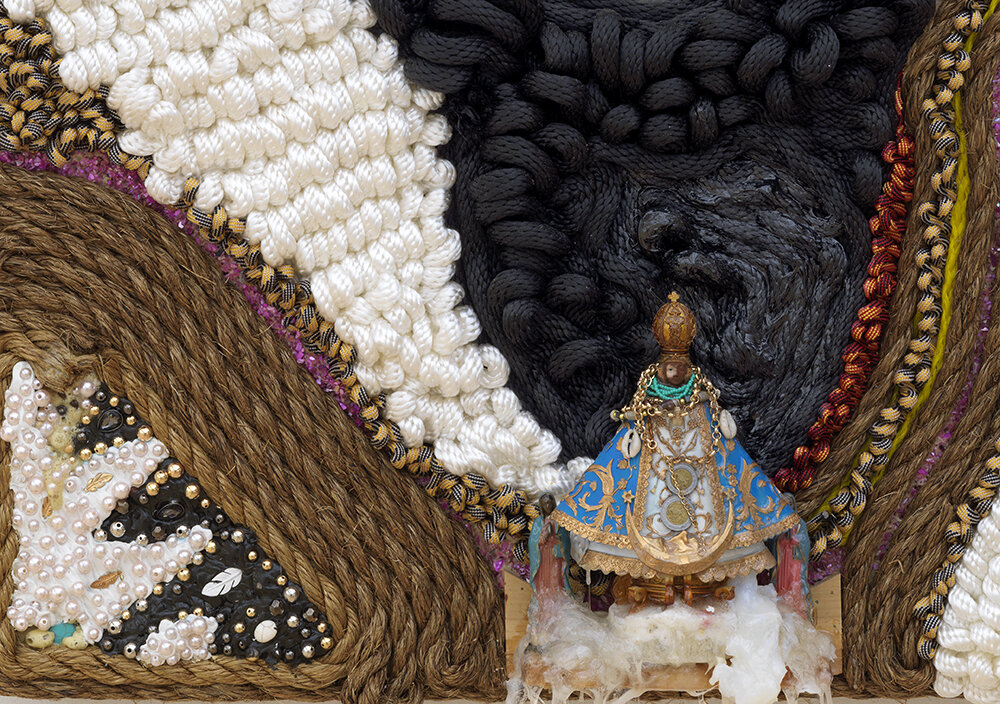
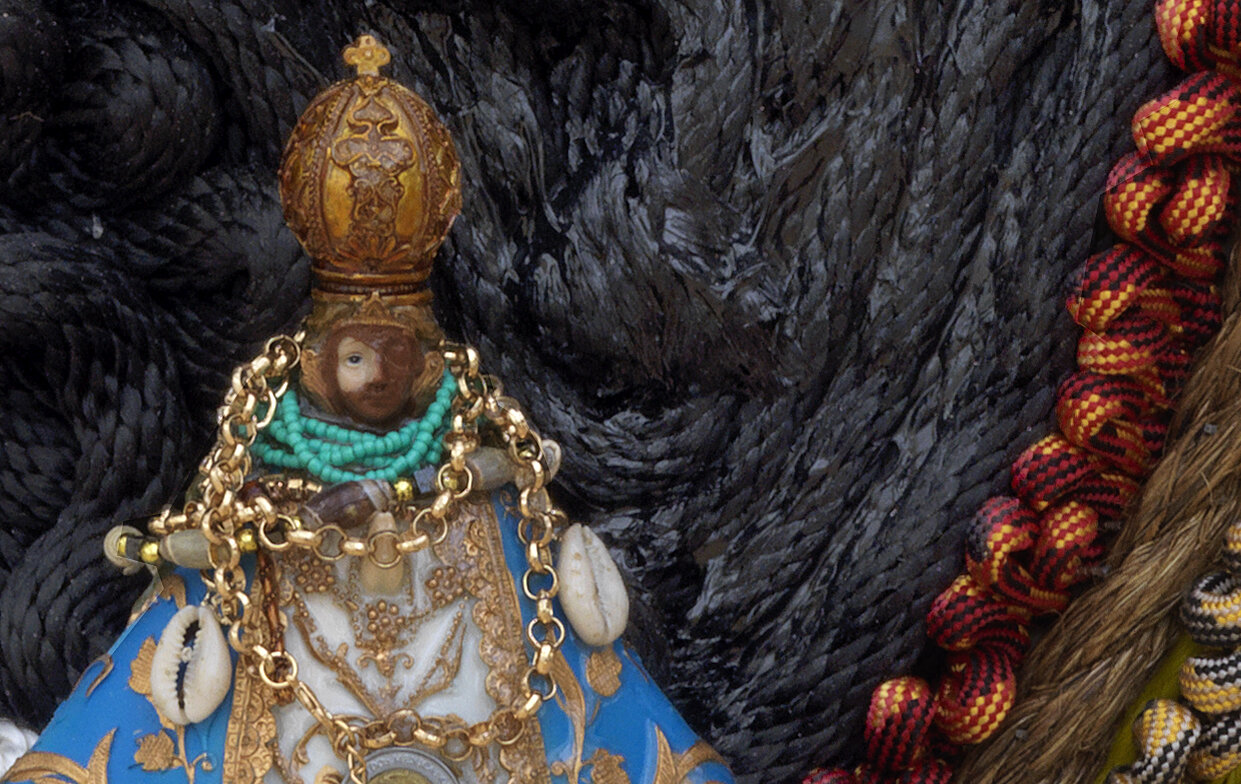
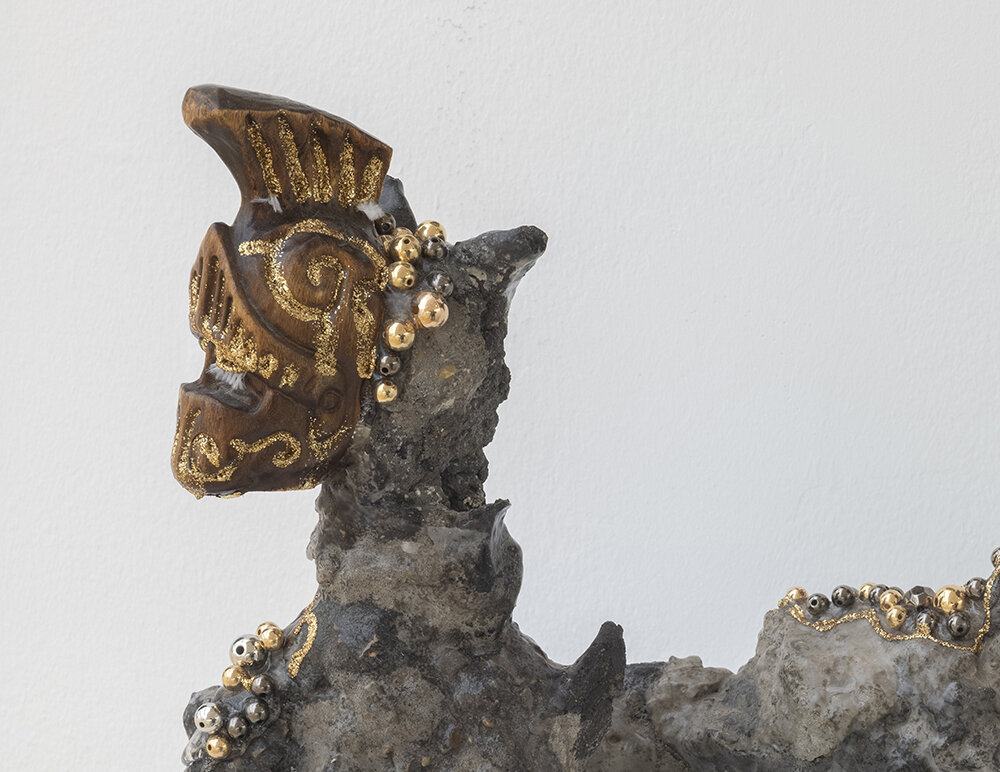
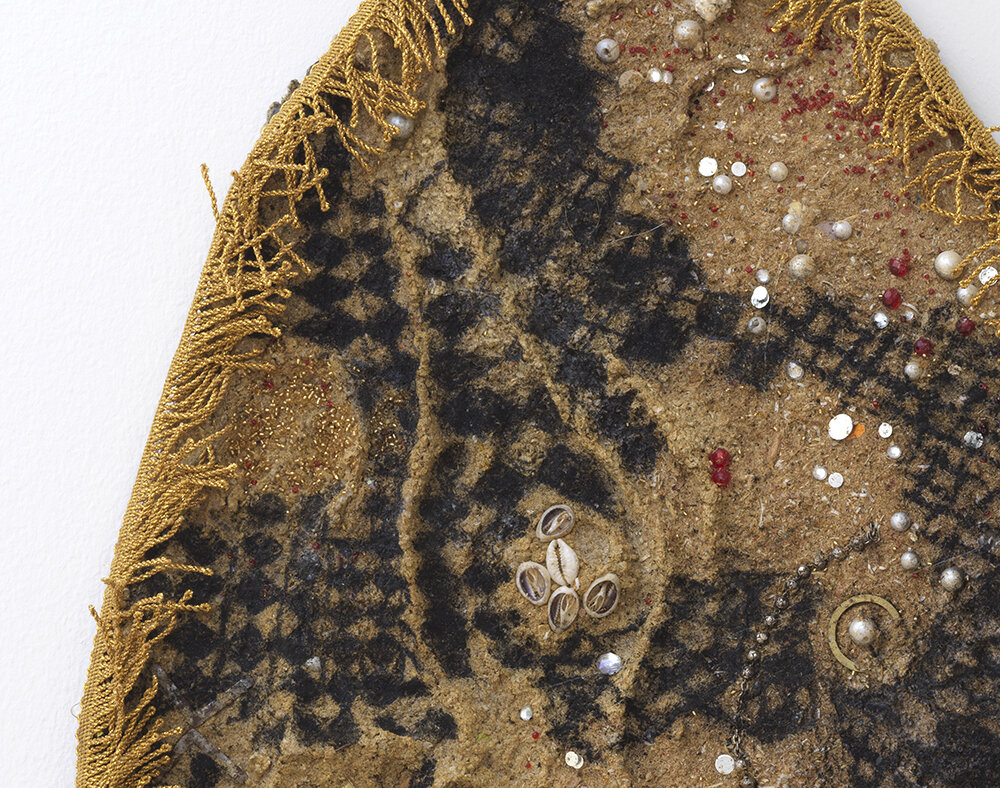
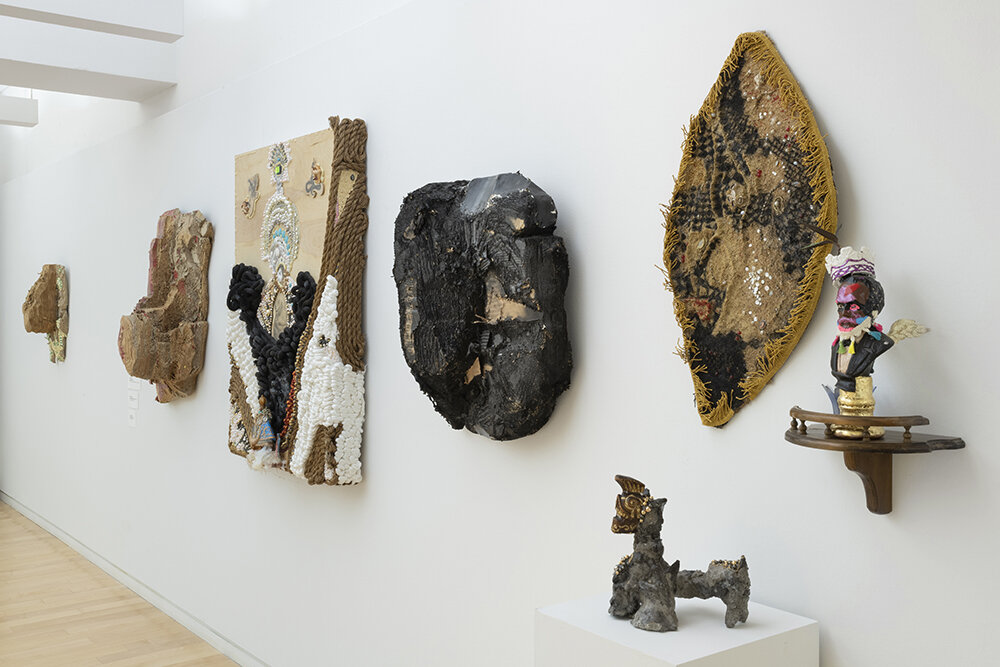
EXHIBITION\LIBRARY GUIDE AS DECOLONIZATION TOOLKIT
Both Eagle and Serpent is an exhibition presenting an artistically constructed and colorful mythology as an act of cultural resistance and reclamation. Working at the intersection of migration, race, gender, and socio-economic status, the exhibition challenges preconceived notions of what it means to be the immigrant, the other and marginalized from Sahagun’s point of view as a Latinx artist. Both Eagle and Serpent presents a wide body of intricate paintings, drawings, and sculptures that combine beads, rope, jute, icons, concrete, lumber, and drywall, which simultaneously celebrate and critically look at his relationship with his hybrid cultural origins and identity. Sahagun is a previously undocumented immigrant, former laborer, ex-gang member, grandson of a curandera, educator and studio artist. He comes from a cultural lineage of Indigenous alchemy and spirituality and European imperialism, which hybridized traditions, histories, and belief systems. Sahagun’s mythology reflects on the integration of these ancestral parts to impart a holistic understanding of the present and himself in the world.
The exhibition title, Both Eagle and Serpent, is inspired by the queer and feminist Chicana writer, Gloria Anzaldúa whose seminal book, Borderlands is a meditation on the binaries of male and female gender, patriarchal and matriarchal order, and the critique and celebration of a dual culture.The eagle-and-serpent symbol is represented on the Mexican flag and is derived from the pre-Hispanic Mexica story of Huitzilopochtli, the god of war, who guided people to an eagle perched on a cactus with a serpent in its beak. The eagle symbolizes the spirit of the sun, the paternal figure of war, Huitzilopochtli. The serpent symbolizes the human soul as the maternal figure, Tonantzin. Together they connote the struggle between male and female.As Anzaldúa points out, the symbolic sacrifice of the serpent to the ostensibly “higher” masculine power indicates the patriarchal order vanquishing the matriarchal order of indigenous Mesoamerica.
For Sahagun, Both Eagle and Serpent means to honor and represent both masculine and feminine energy as an artistic device to heal. It’s a mythology that celebrates ancient beginnings and shapes new contemporary identities in his artwork. Through experiencing spiritual and psychic interventions, Sahagun has learned that he harbors feminine energy in a male-presenting body. Both Eagle and Serpent, as an exhibition and symbolic reference, opens up a conversation about gender, power, conquest, trauma, and survival.
This project is presented through City of Chicago:: The Department of Cultural Affairs and Special Events (DCASE) ArtSpace Grant Program.
Exhibition Curated by: Teresa Silva & Luis Sahagun
Decolonization Toolkit by: Analu Lopez & Luis Sahagun
Photography by James Prinz & Tom Van Eynde
EXHIBITION\LIBRARY GUIDE AS DECOLONIZATION TOOLKIT
Both Eagle and Serpent is an exhibition presenting an artistically constructed and colorful mythology as an act of cultural resistance and reclamation. Working at the intersection of migration, race, gender, and socio-economic status, the exhibition challenges preconceived notions of what it means to be the immigrant, the other and marginalized from Sahagun’s point of view as a Latinx artist. Both Eagle and Serpent presents a wide body of intricate paintings, drawings, and sculptures that combine beads, rope, jute, icons, concrete, lumber, and drywall, which simultaneously celebrate and critically look at his relationship with his hybrid cultural origins and identity. Sahagun is a previously undocumented immigrant, former laborer, ex-gang member, grandson of a curandera, educator and studio artist. He comes from a cultural lineage of Indigenous alchemy and spirituality and European imperialism, which hybridized traditions, histories, and belief systems. Sahagun’s mythology reflects on the integration of these ancestral parts to impart a holistic understanding of the present and himself in the world.
The exhibition title, Both Eagle and Serpent, is inspired by the queer and feminist Chicana writer, Gloria Anzaldúa whose seminal book, Borderlands is a meditation on the binaries of male and female gender, patriarchal and matriarchal order, and the critique and celebration of a dual culture.The eagle-and-serpent symbol is represented on the Mexican flag and is derived from the pre-Hispanic Mexica story of Huitzilopochtli, the god of war, who guided people to an eagle perched on a cactus with a serpent in its beak. The eagle symbolizes the spirit of the sun, the paternal figure of war, Huitzilopochtli. The serpent symbolizes the human soul as the maternal figure, Tonantzin. Together they connote the struggle between male and female.As Anzaldúa points out, the symbolic sacrifice of the serpent to the ostensibly “higher” masculine power indicates the patriarchal order vanquishing the matriarchal order of indigenous Mesoamerica.
For Sahagun, Both Eagle and Serpent means to honor and represent both masculine and feminine energy as an artistic device to heal. It’s a mythology that celebrates ancient beginnings and shapes new contemporary identities in his artwork. Through experiencing spiritual and psychic interventions, Sahagun has learned that he harbors feminine energy in a male-presenting body. Both Eagle and Serpent, as an exhibition and symbolic reference, opens up a conversation about gender, power, conquest, trauma, and survival.
This project is presented through City of Chicago:: The Department of Cultural Affairs and Special Events (DCASE) ArtSpace Grant Program.
Exhibition Curated by: Teresa Silva & Luis Sahagun
Decolonization Toolkit by: Analu Lopez & Luis Sahagun
Photography by James Prinz & Tom Van Eynde